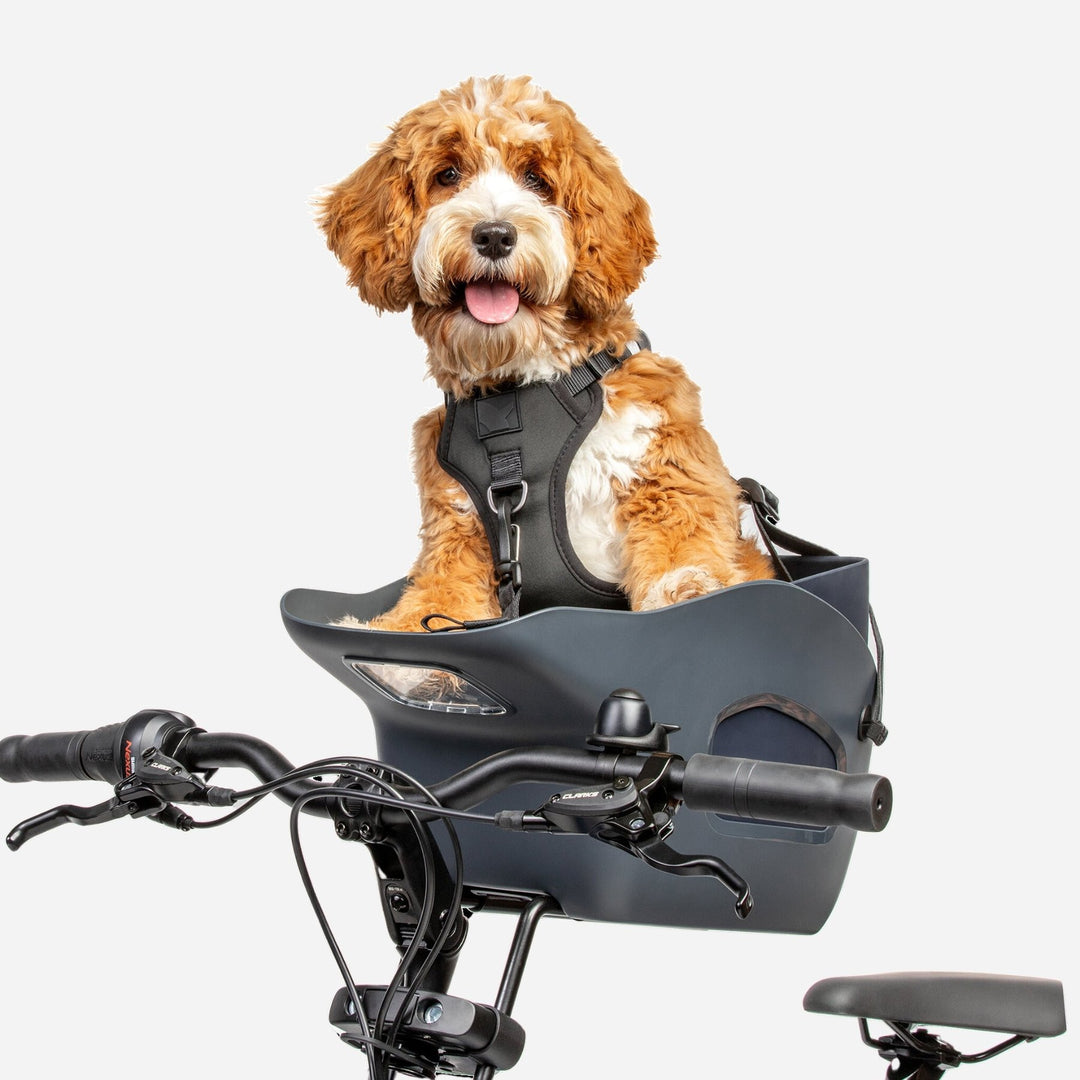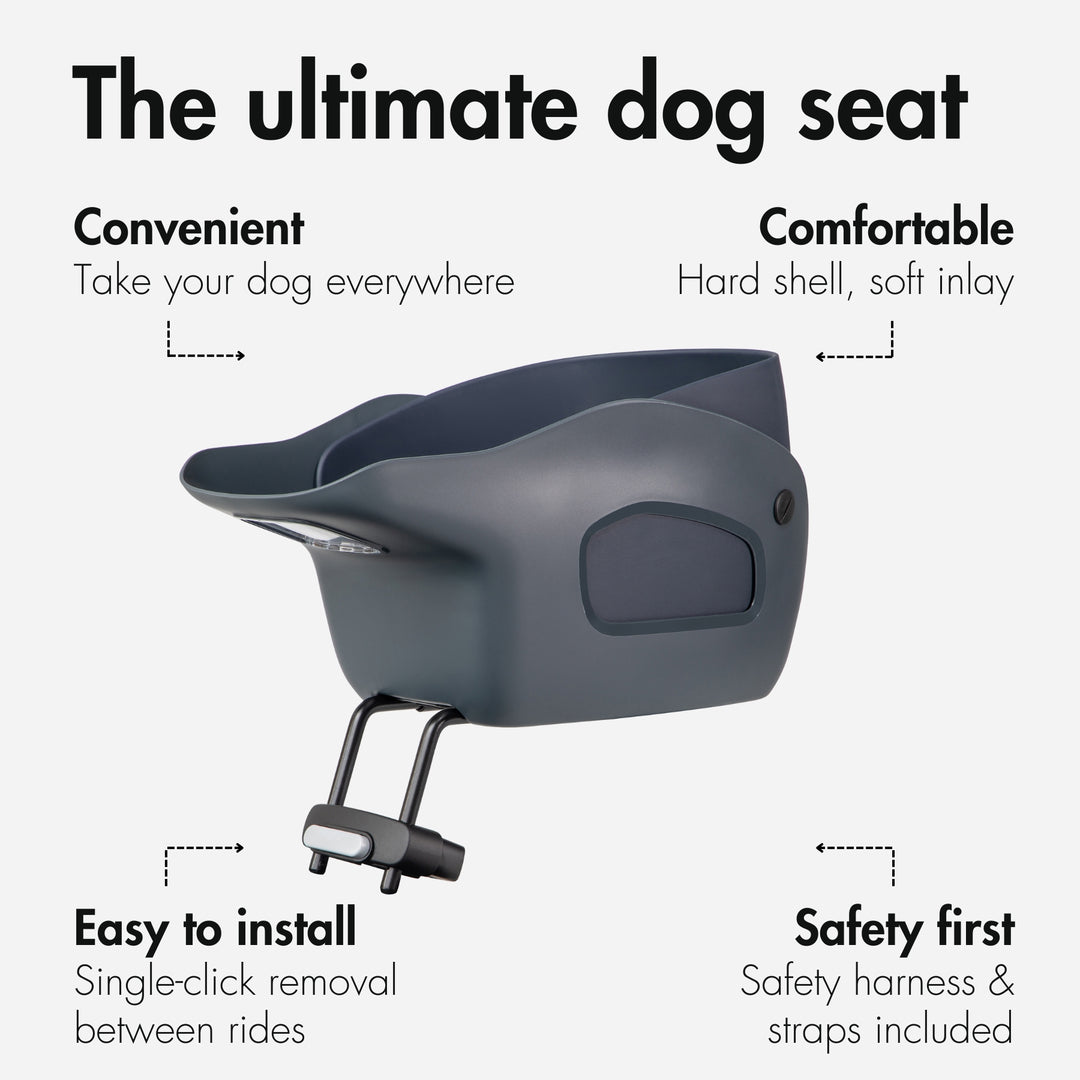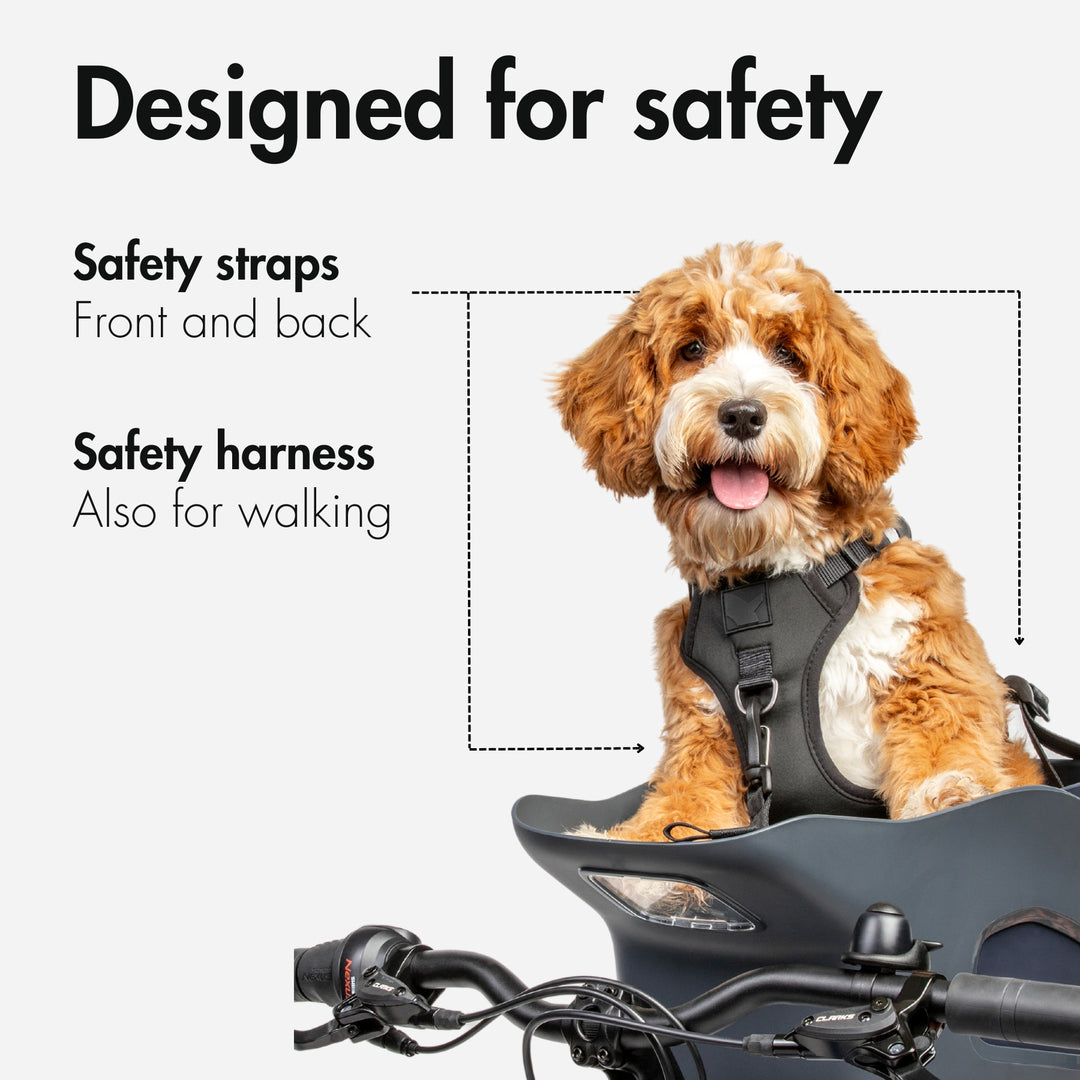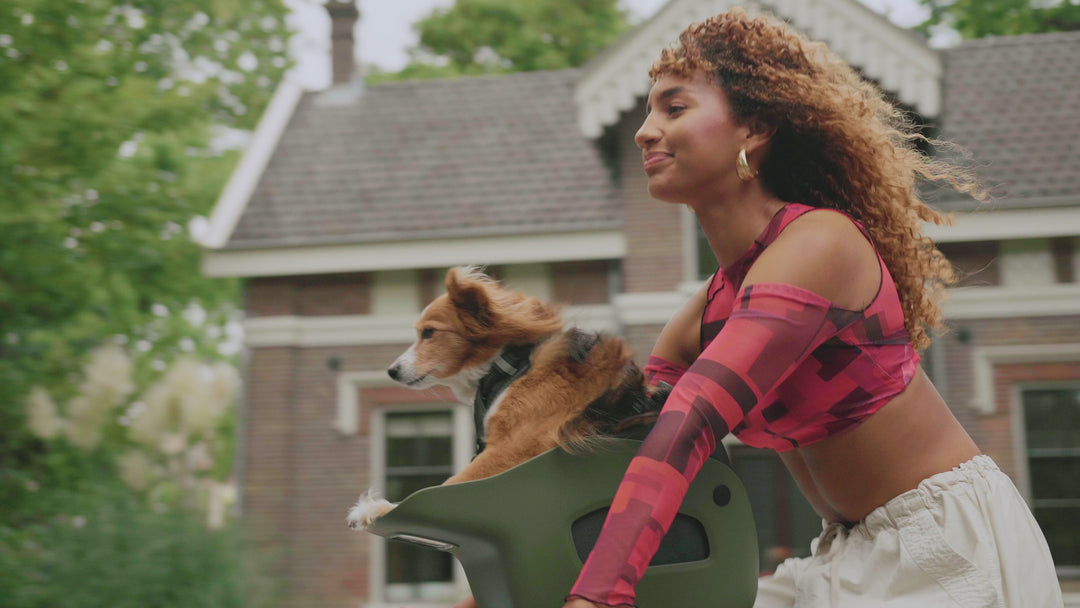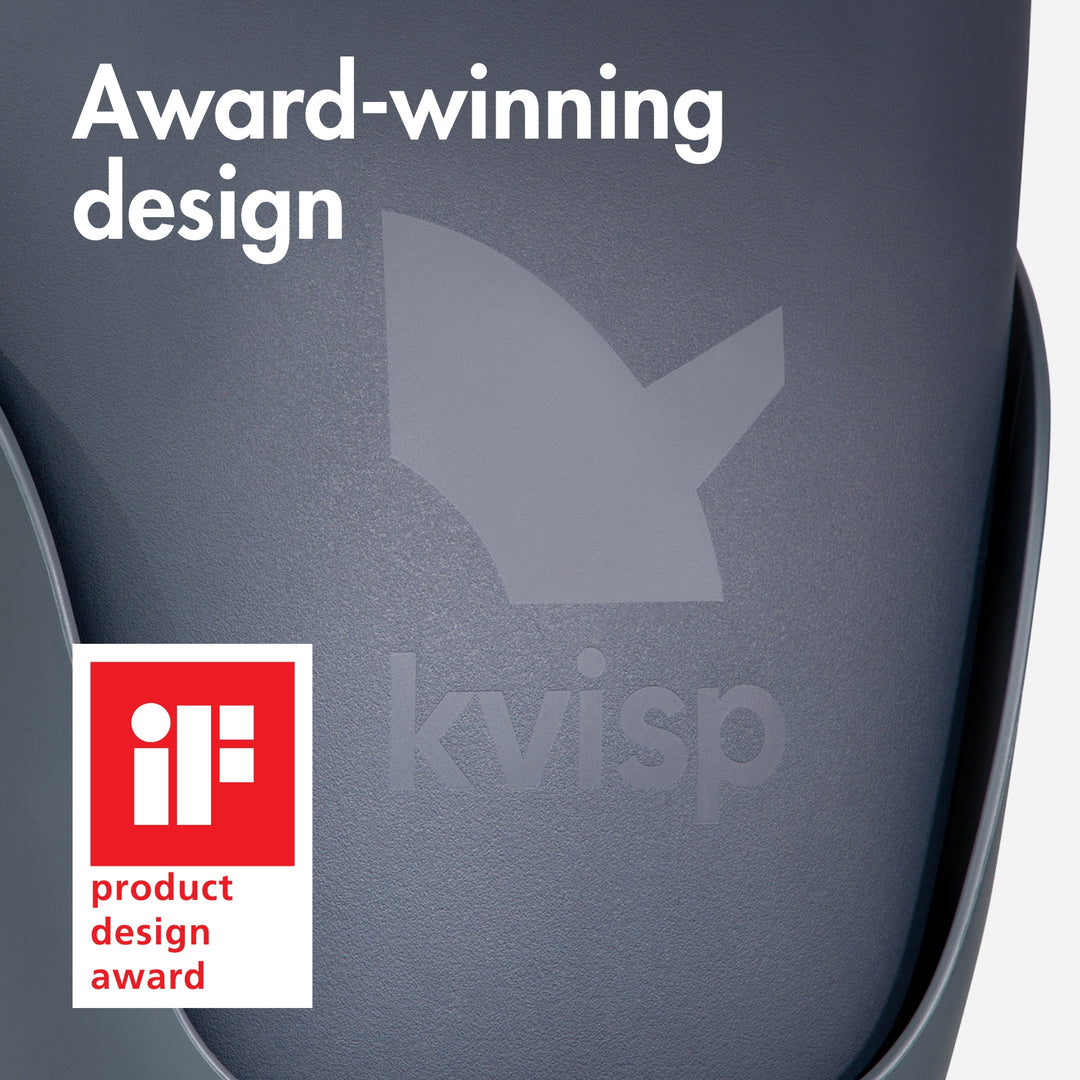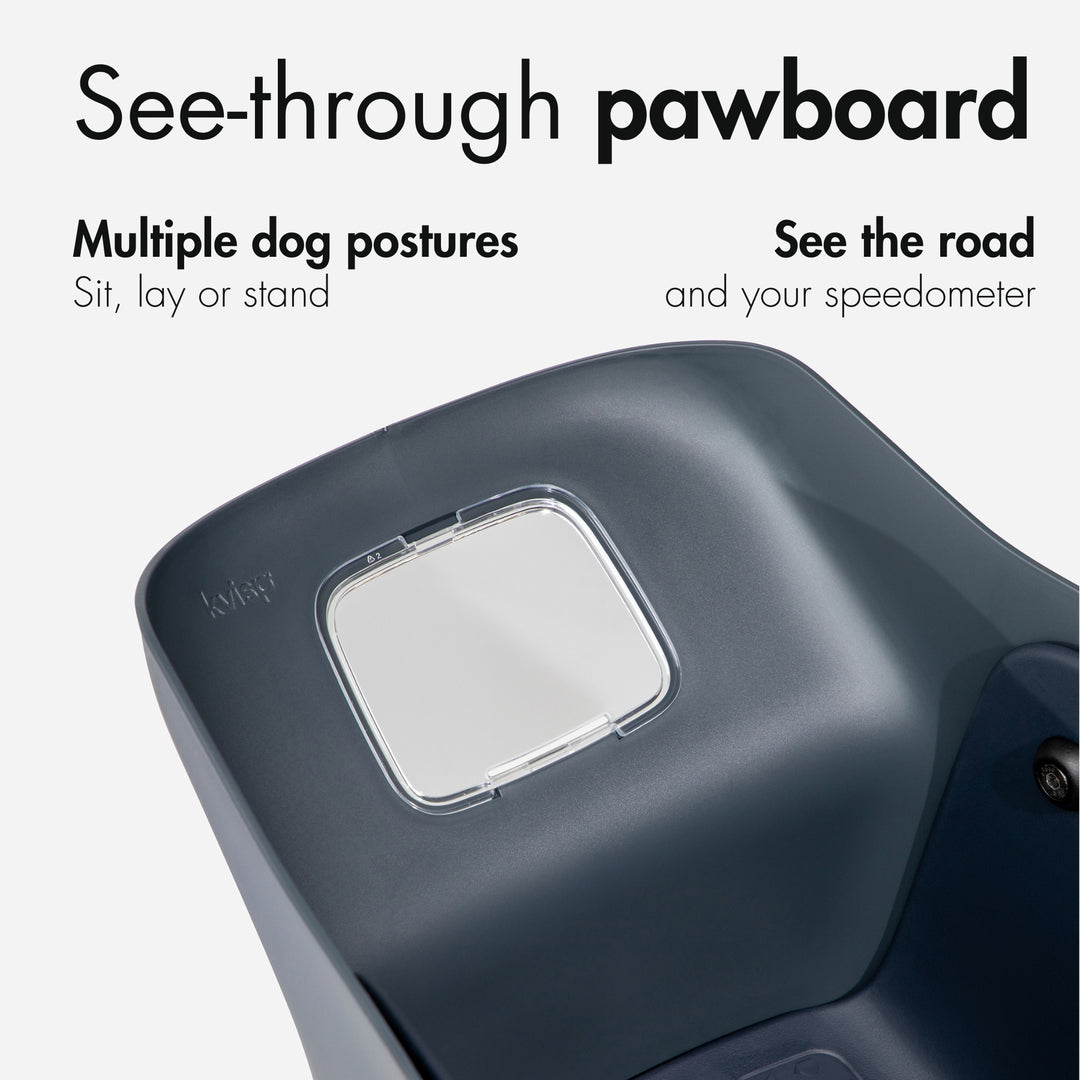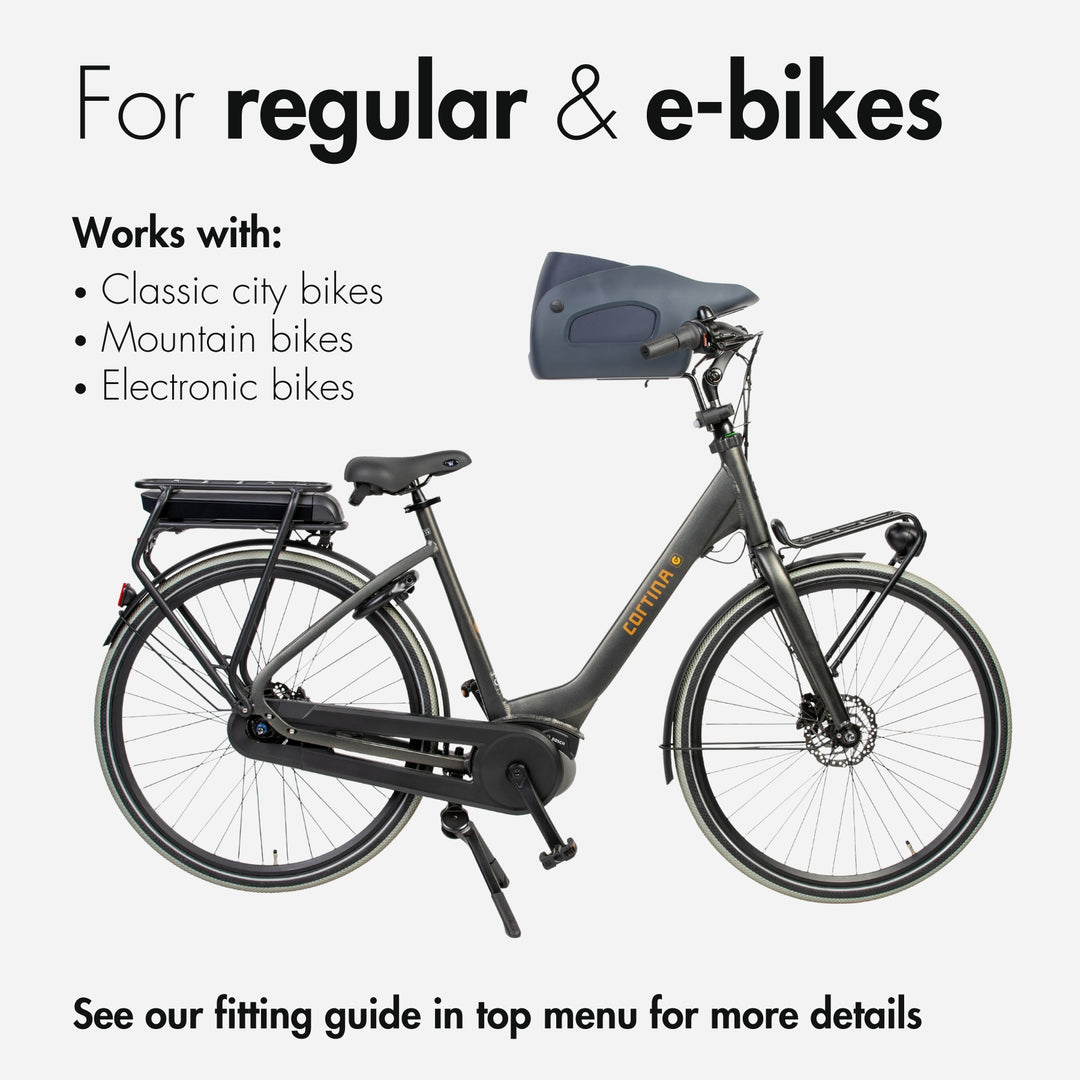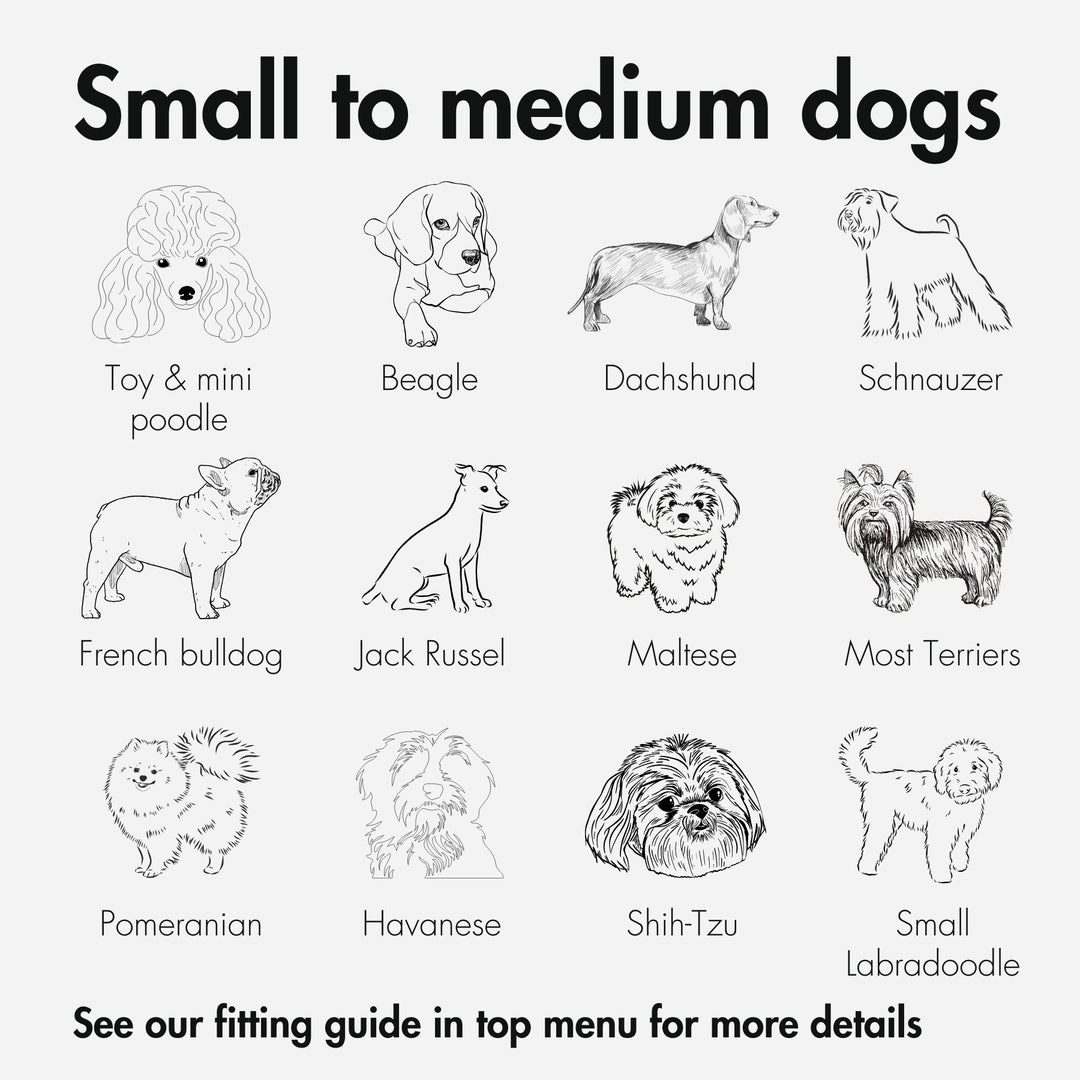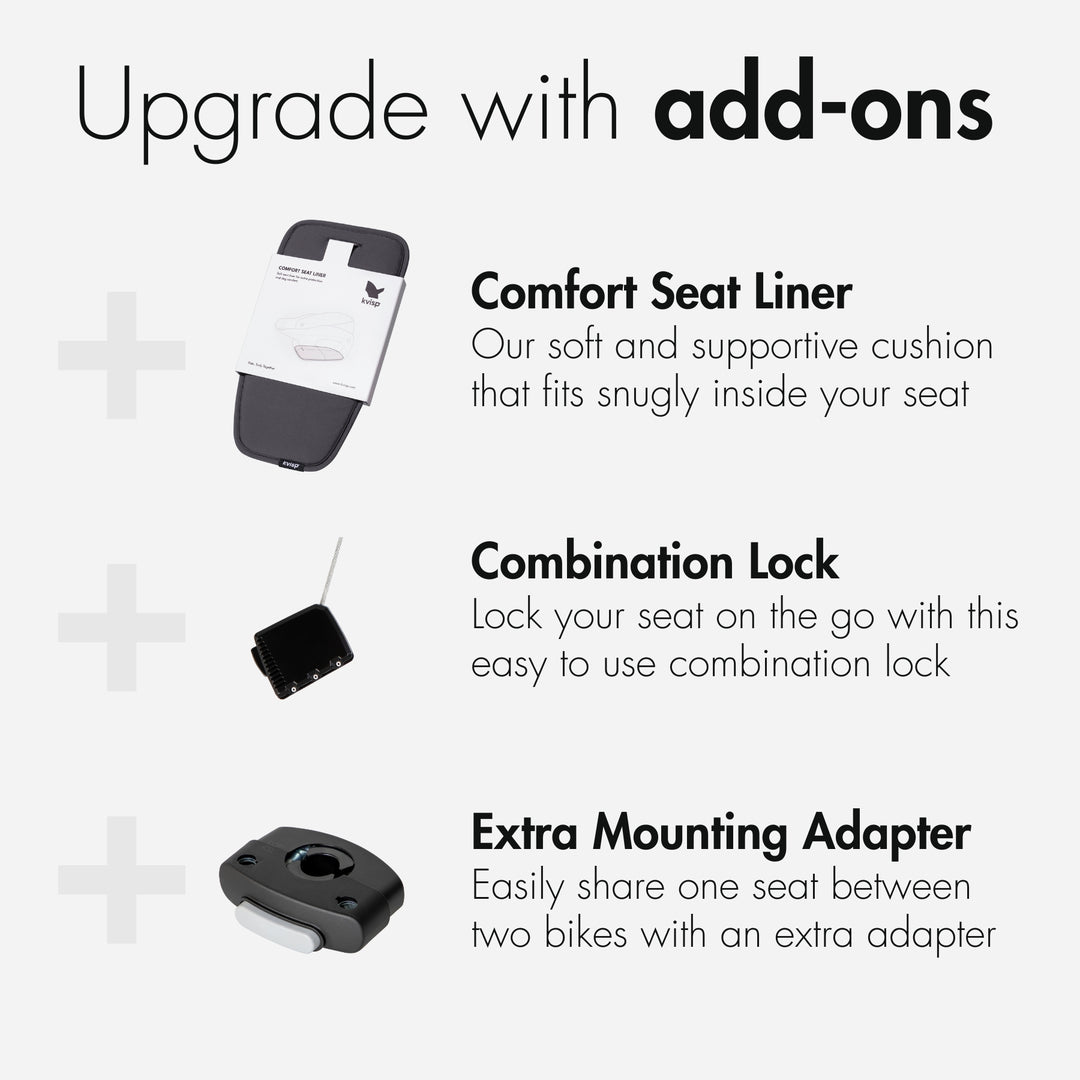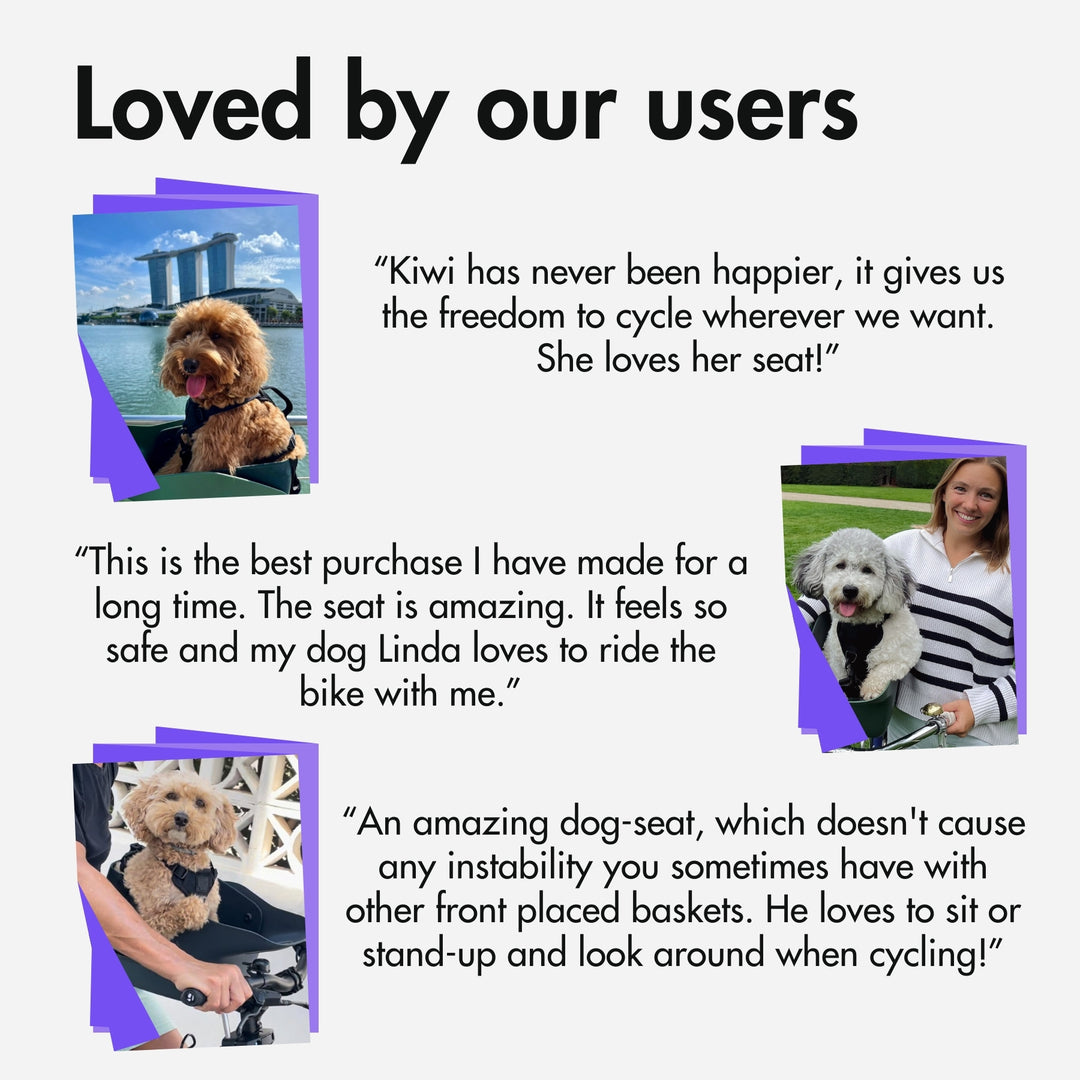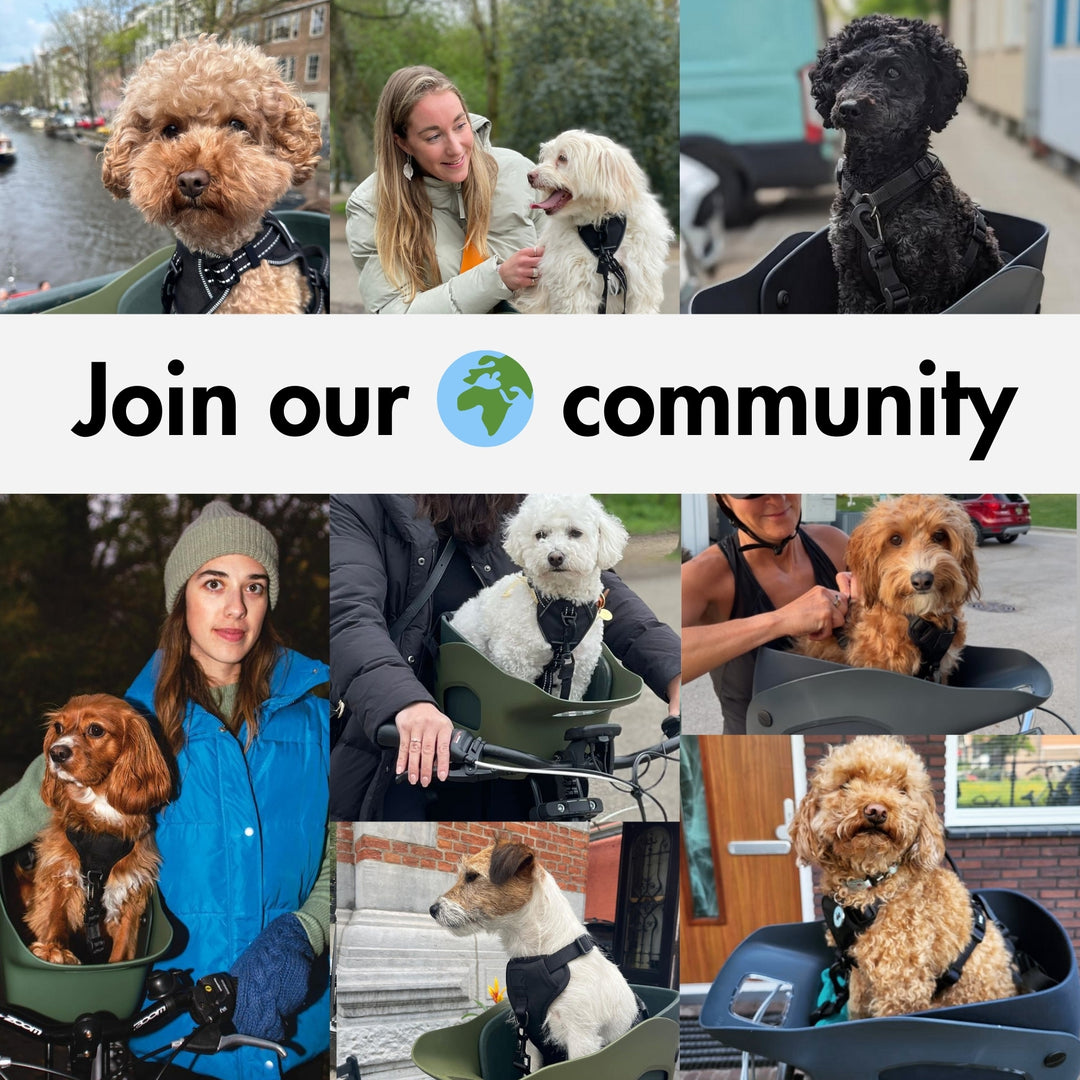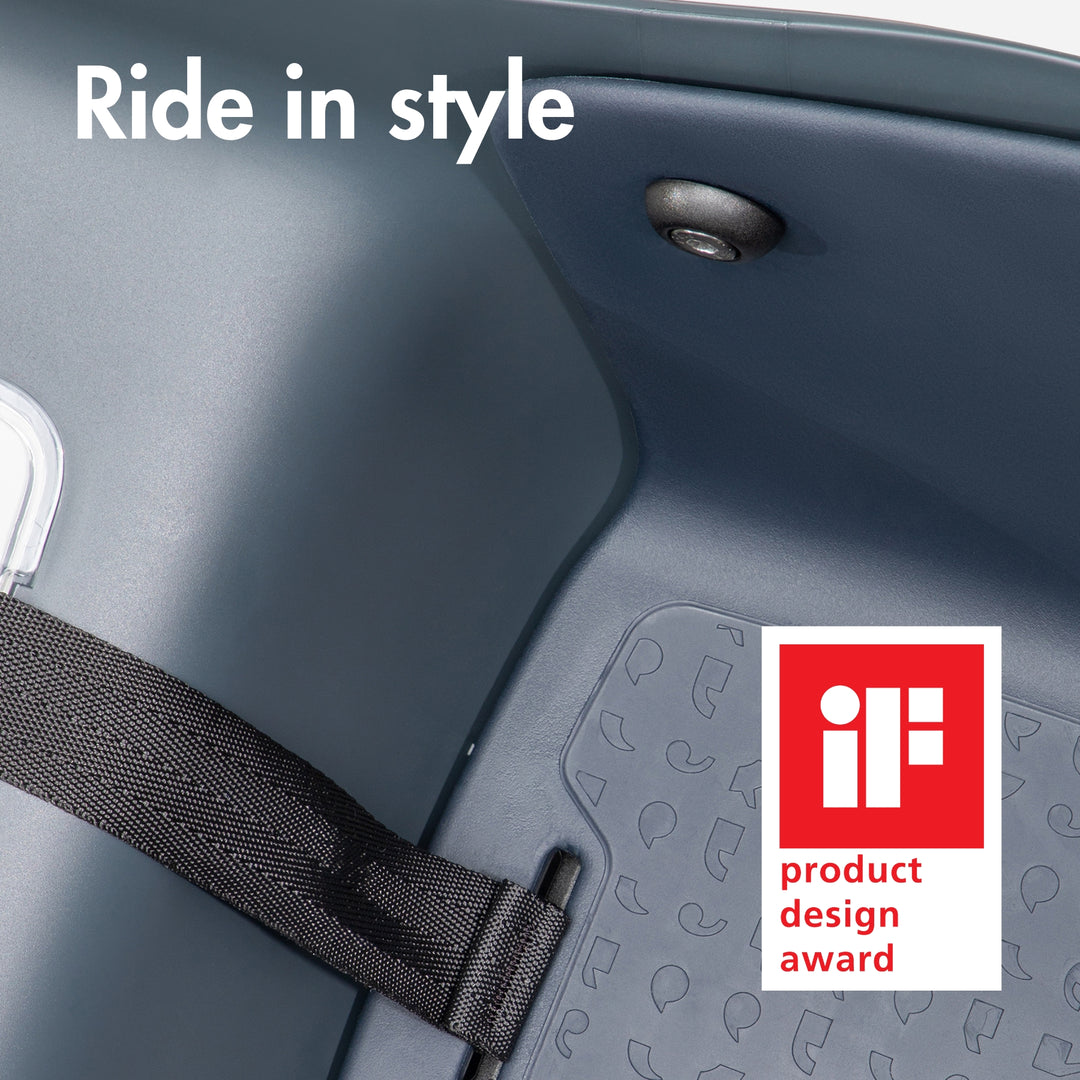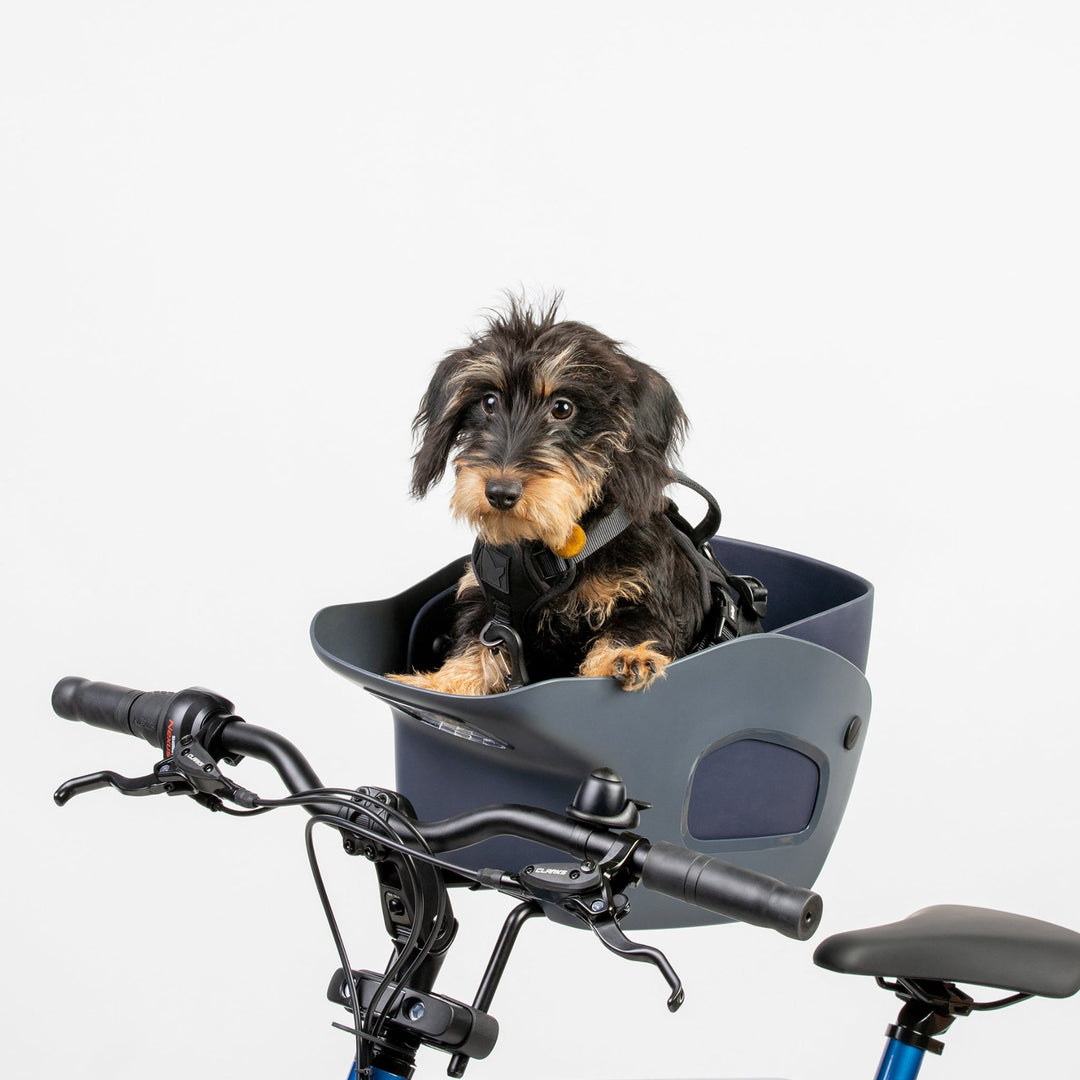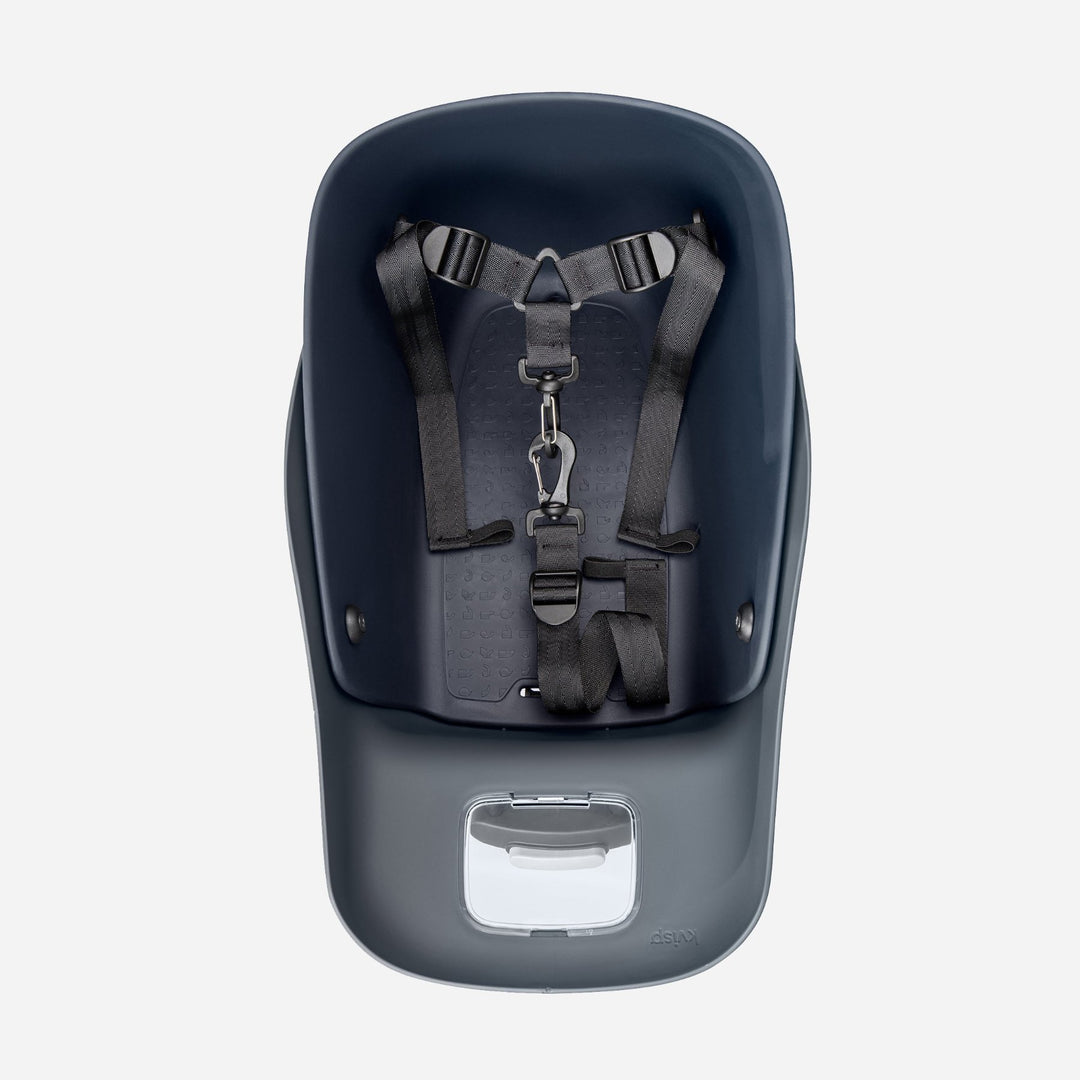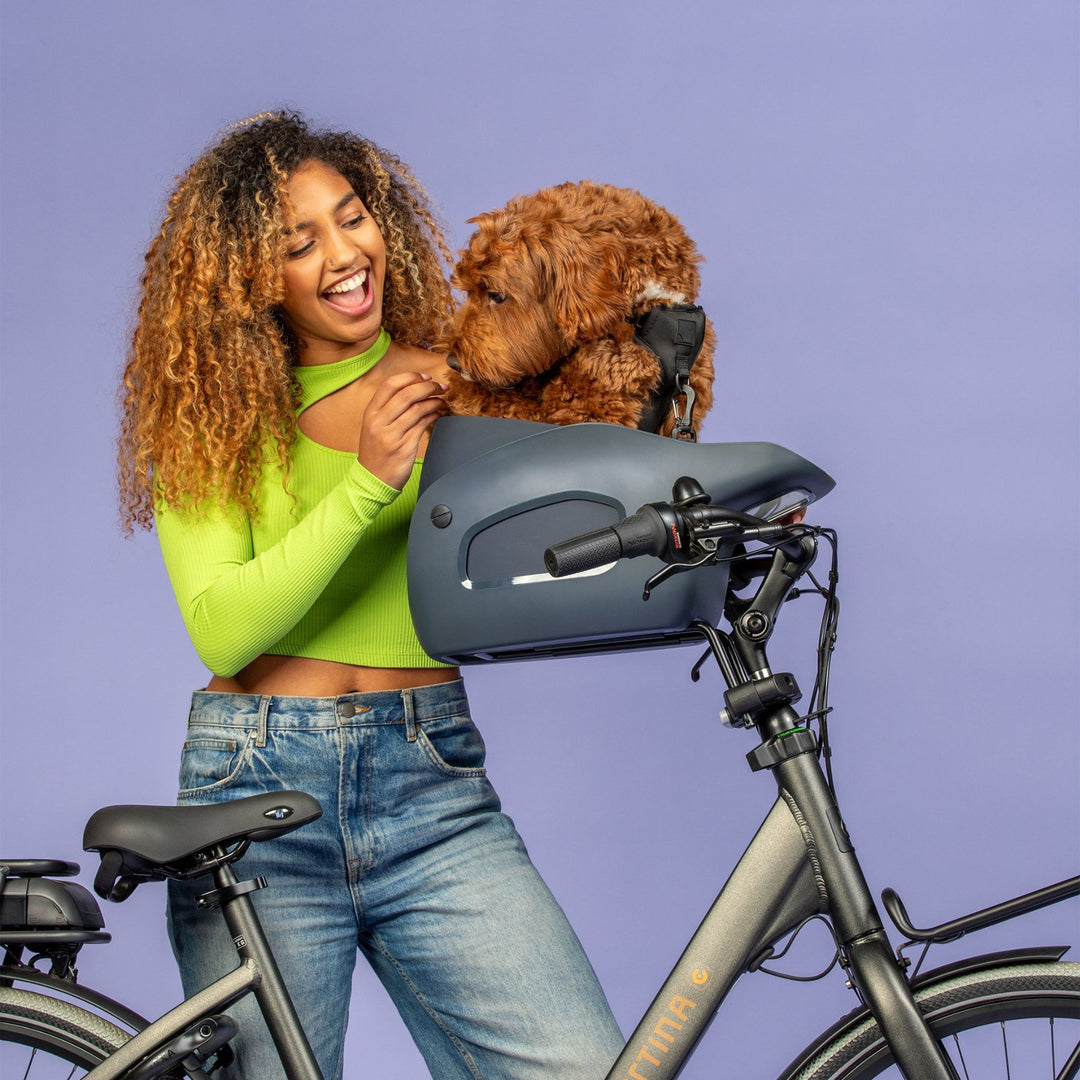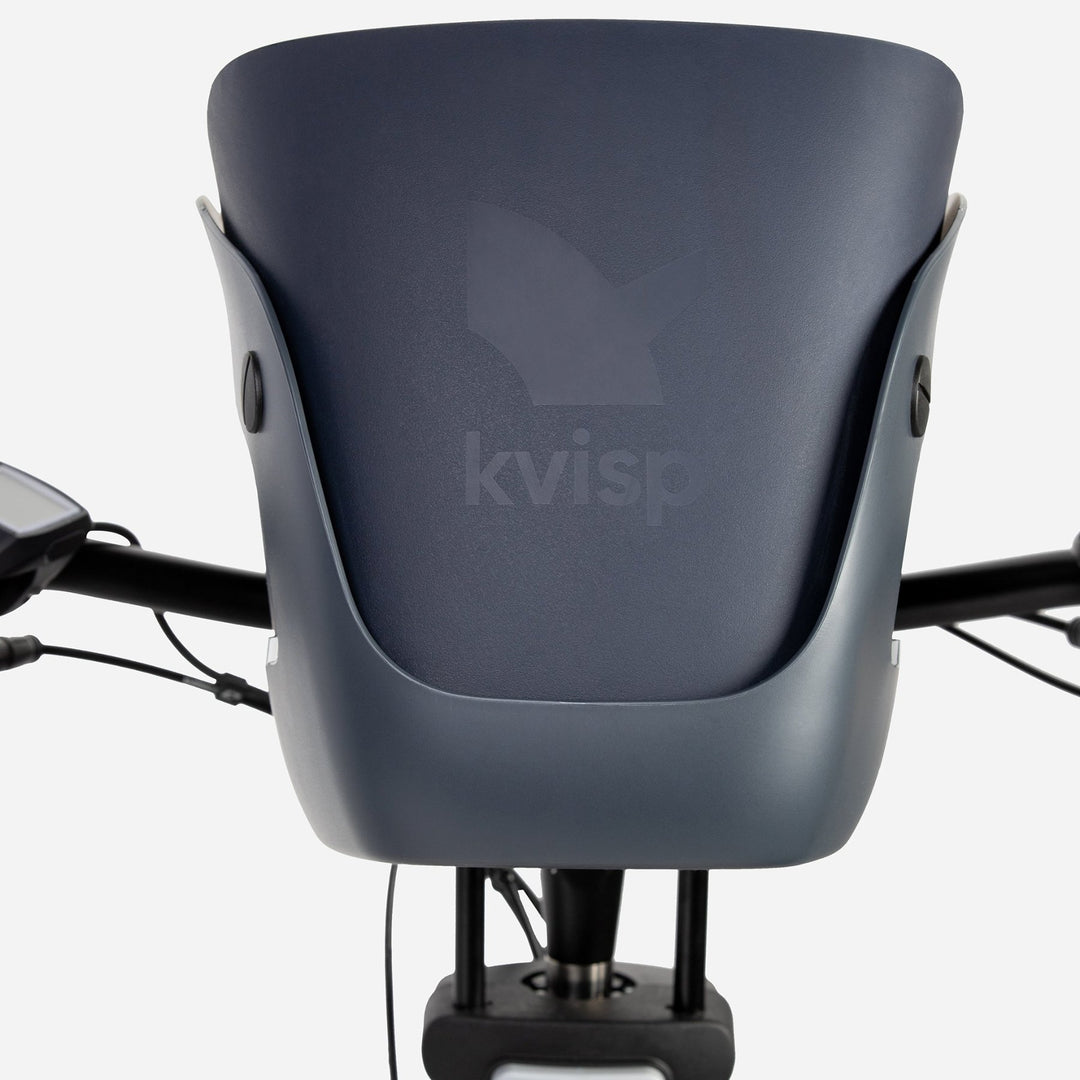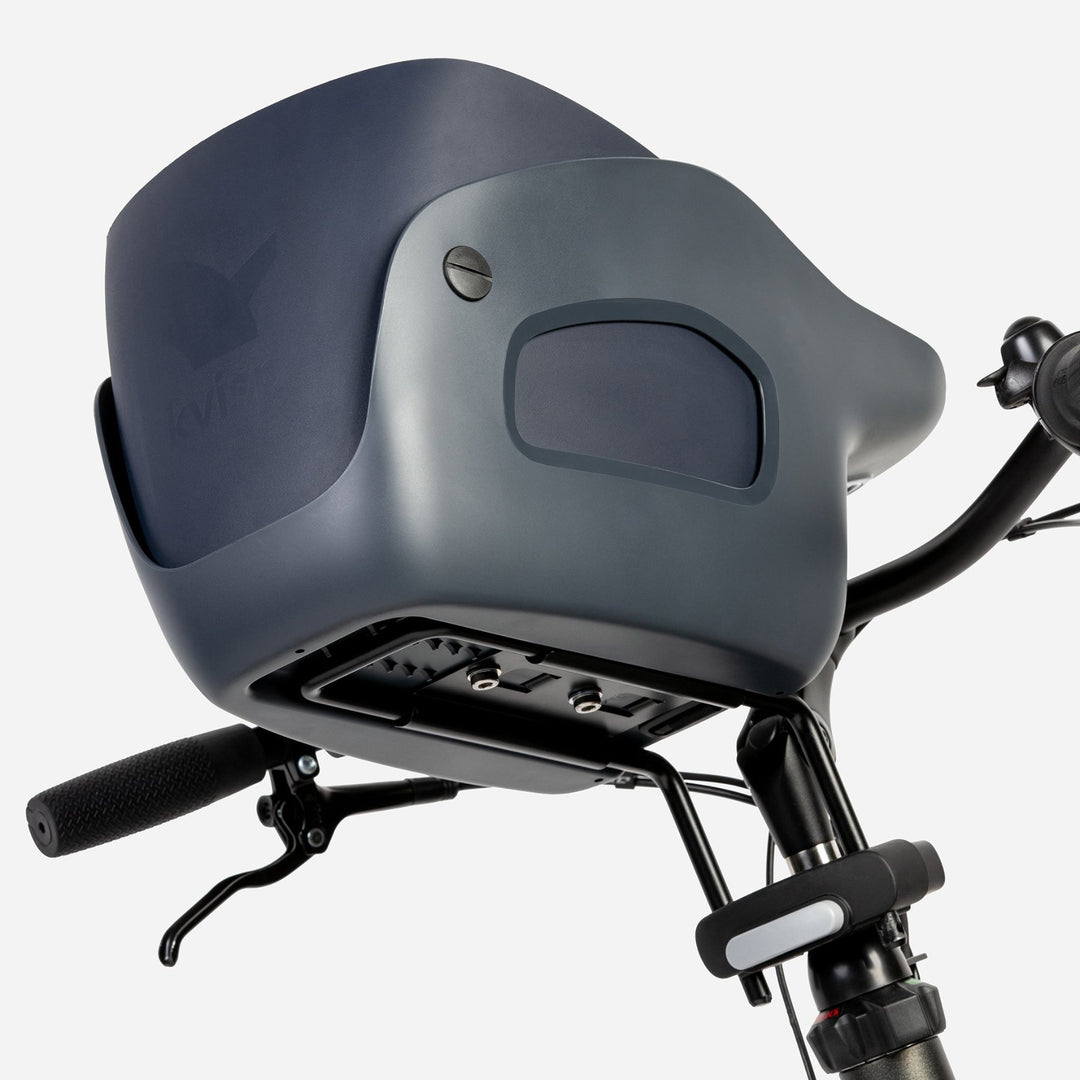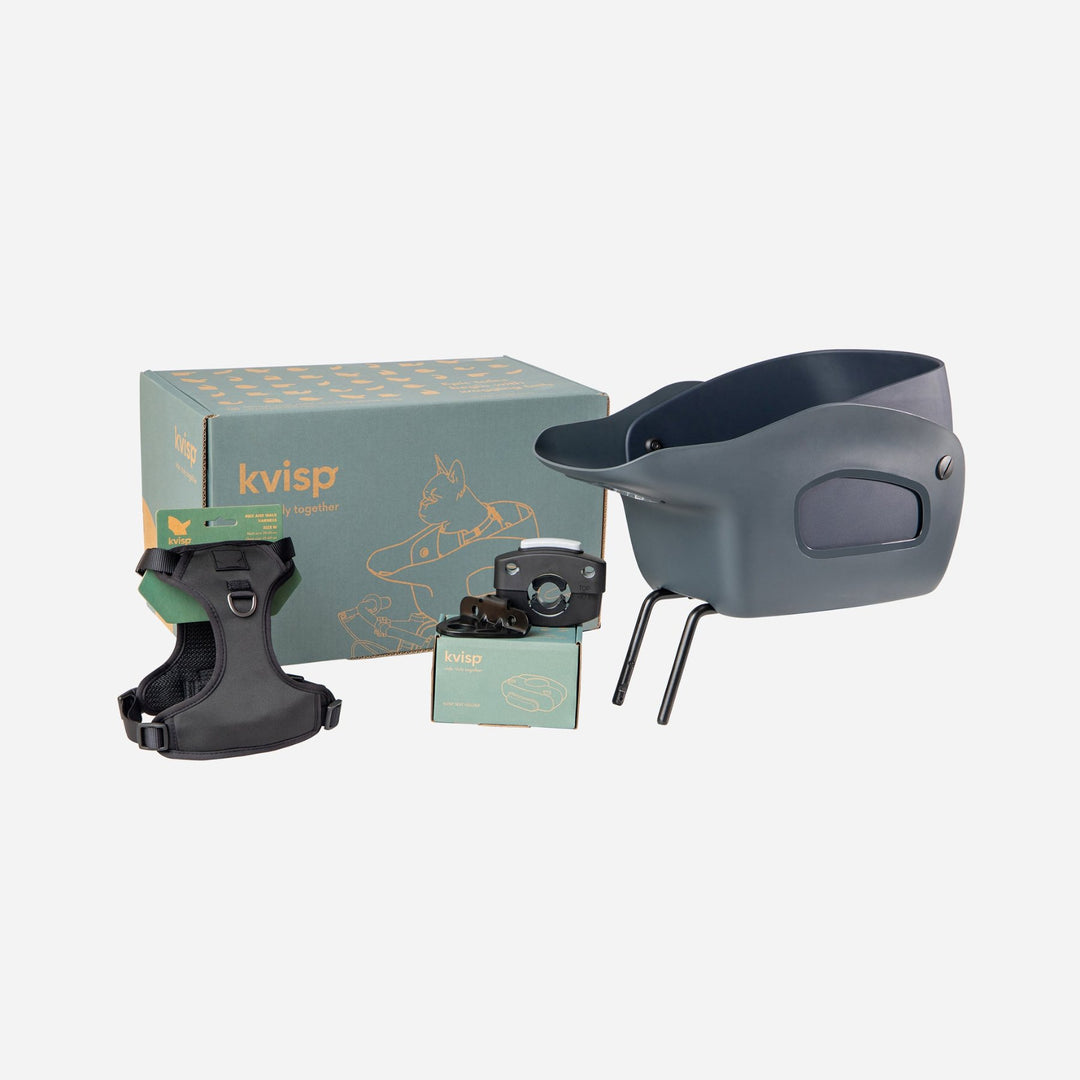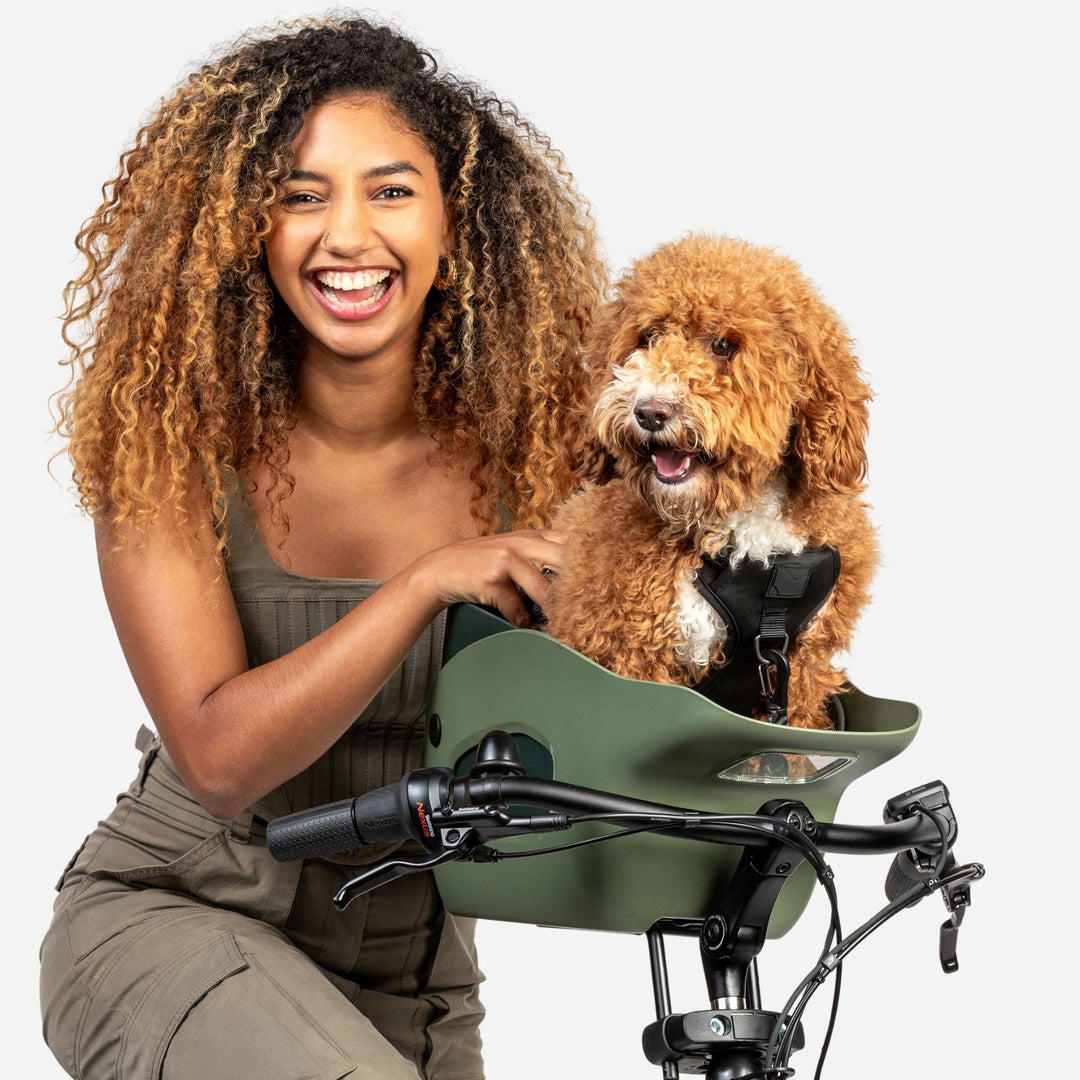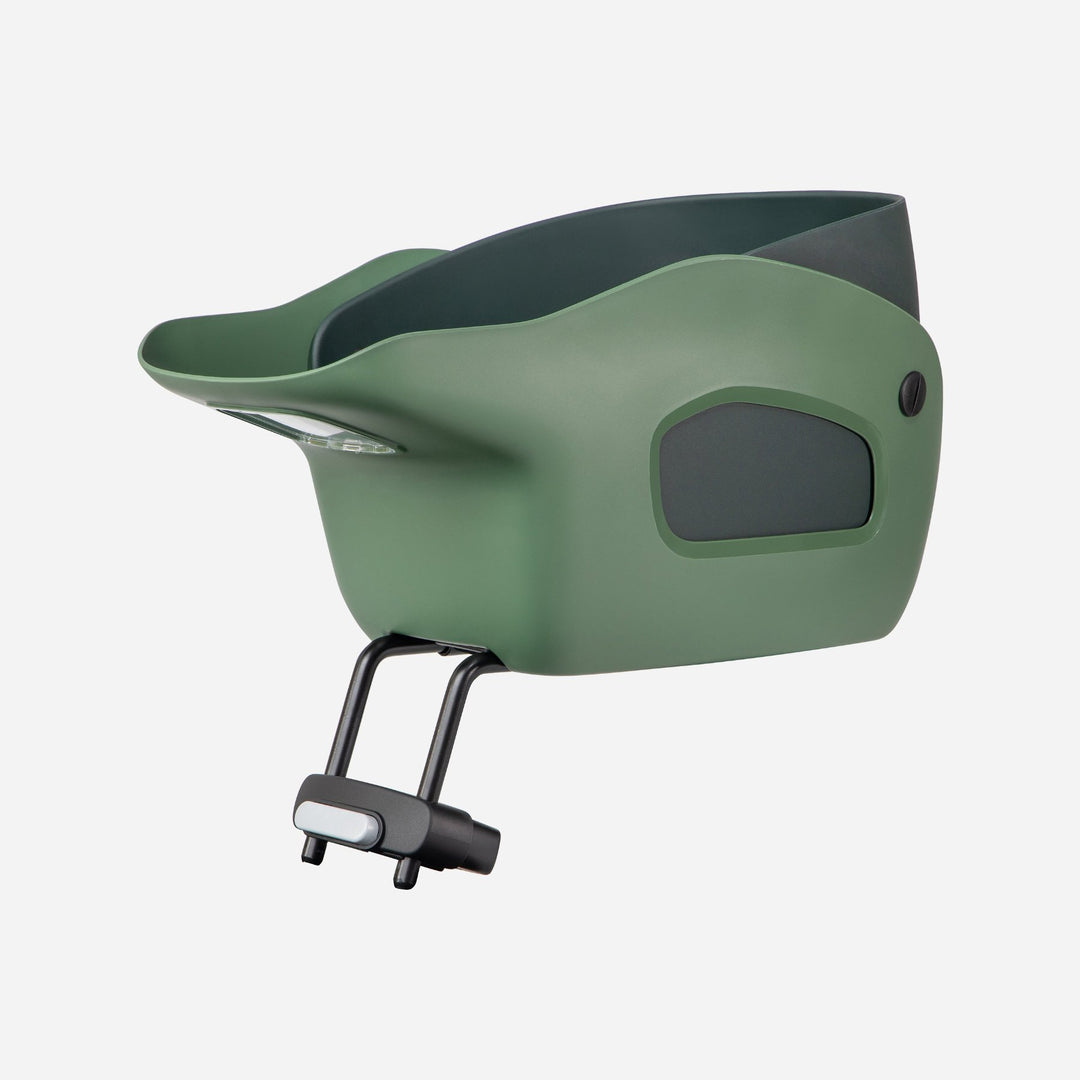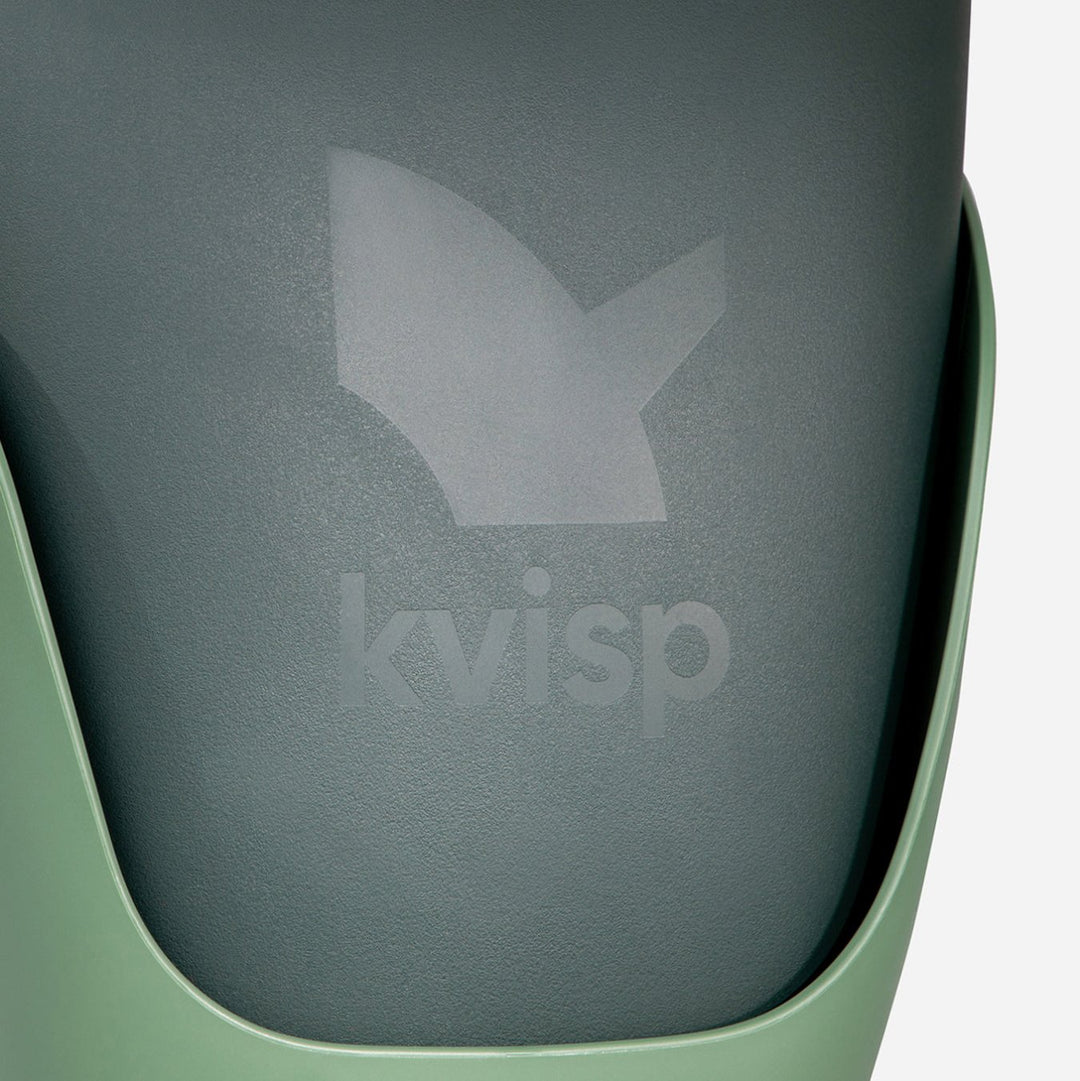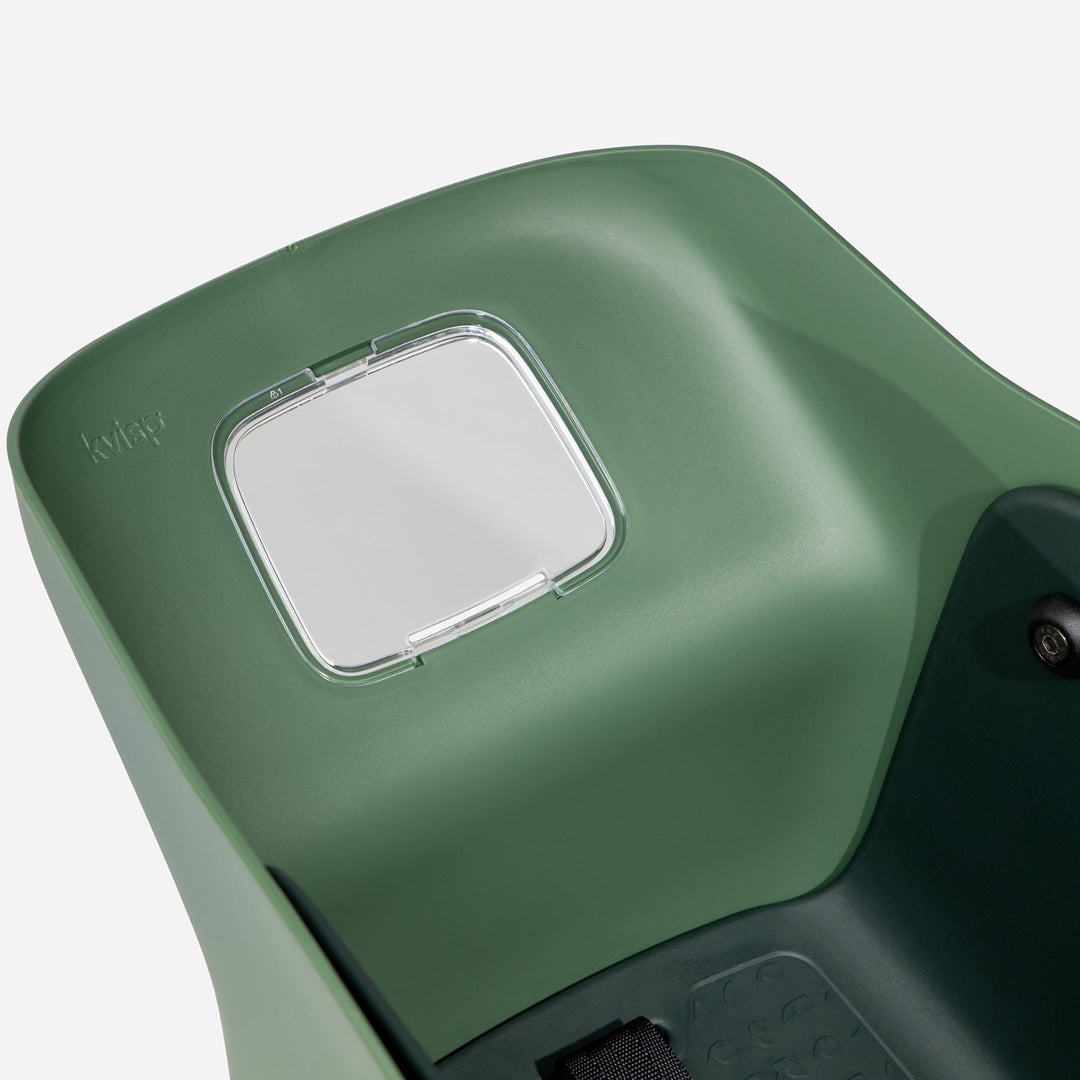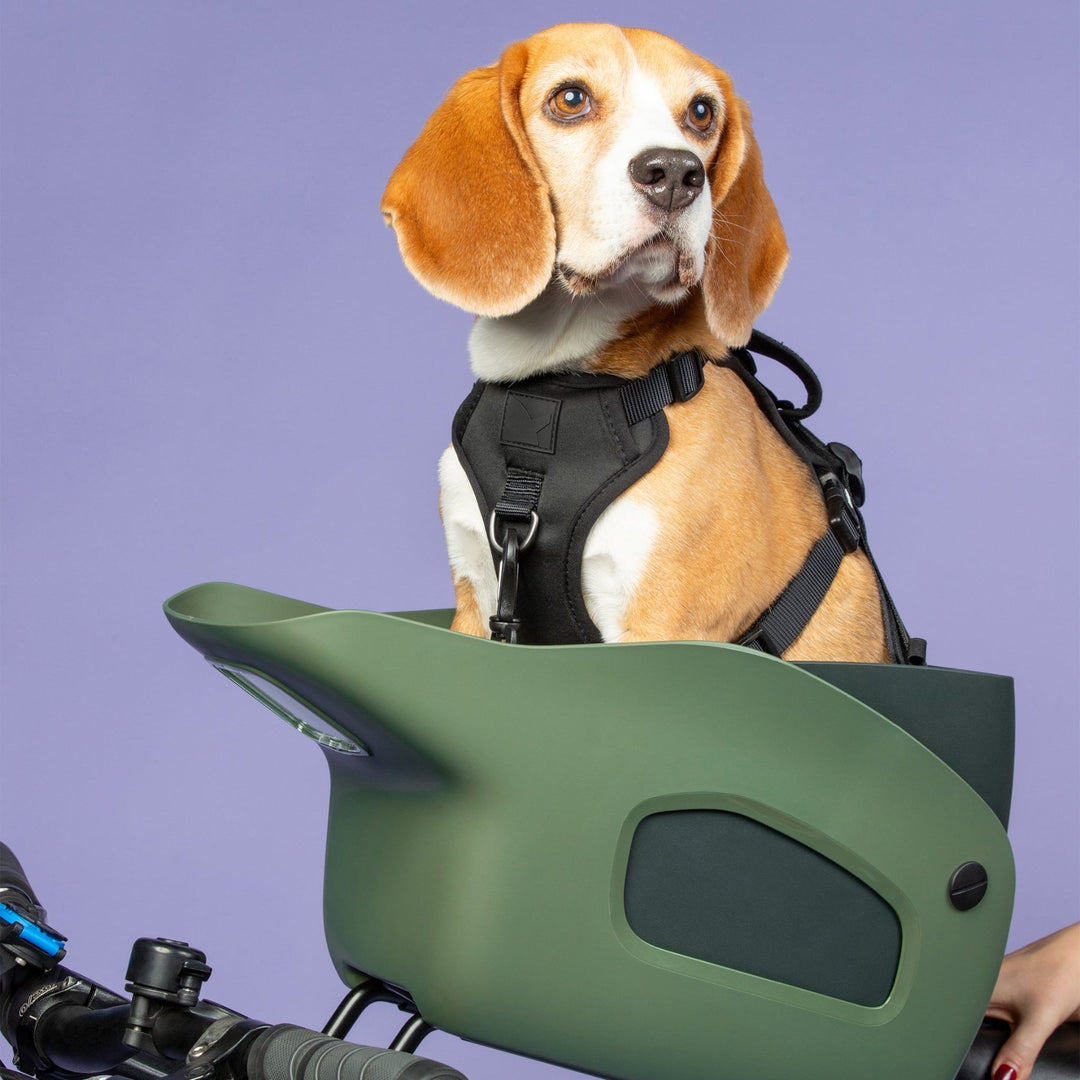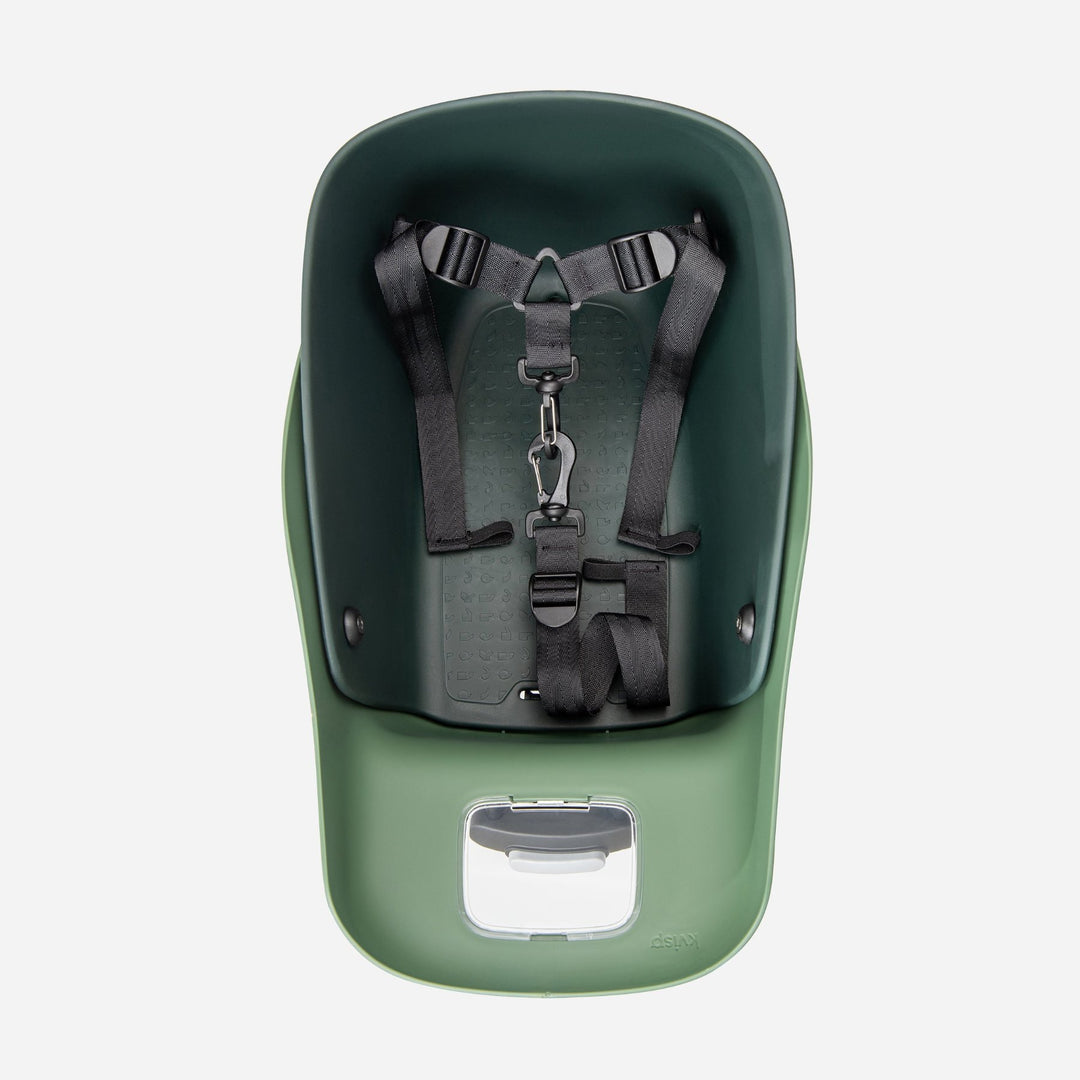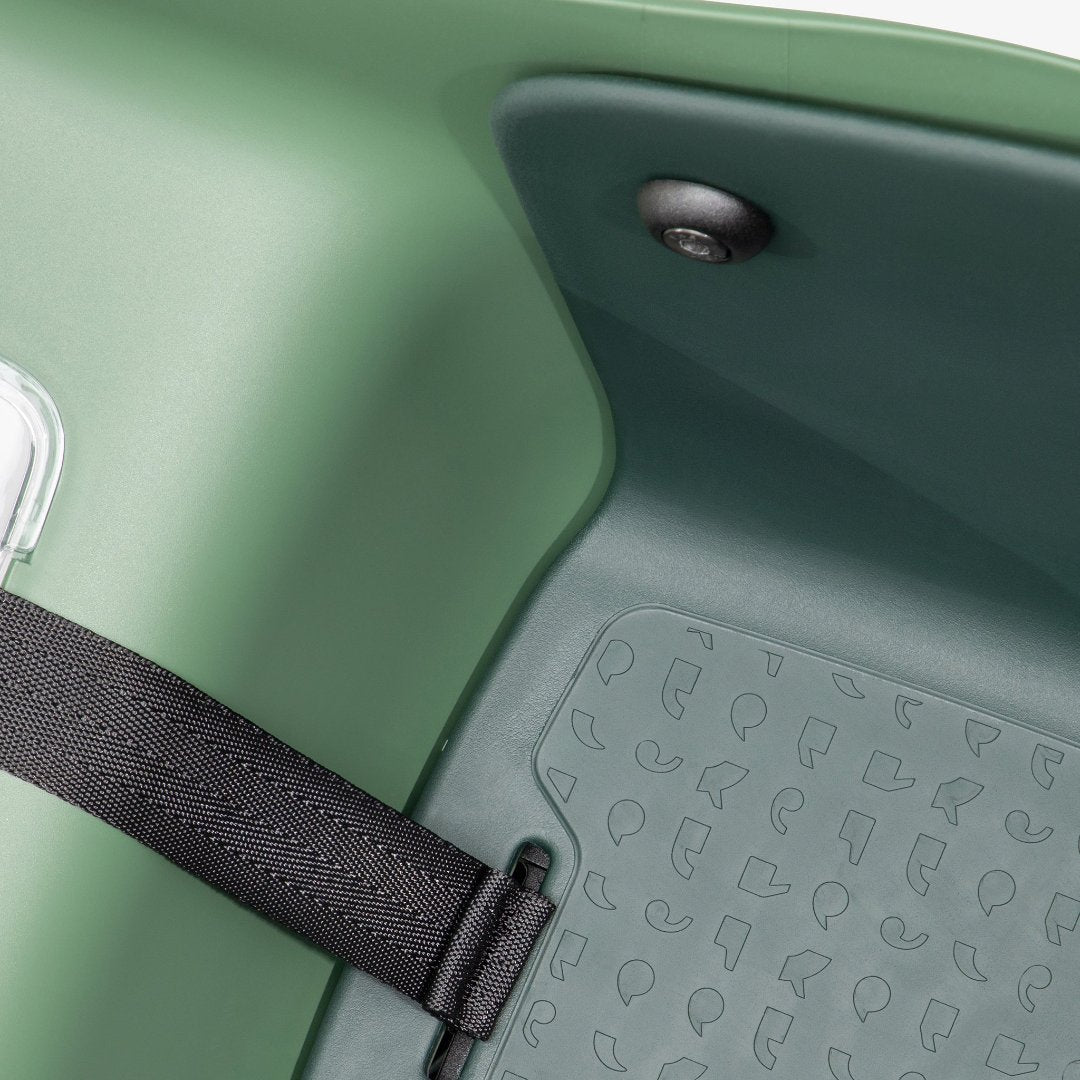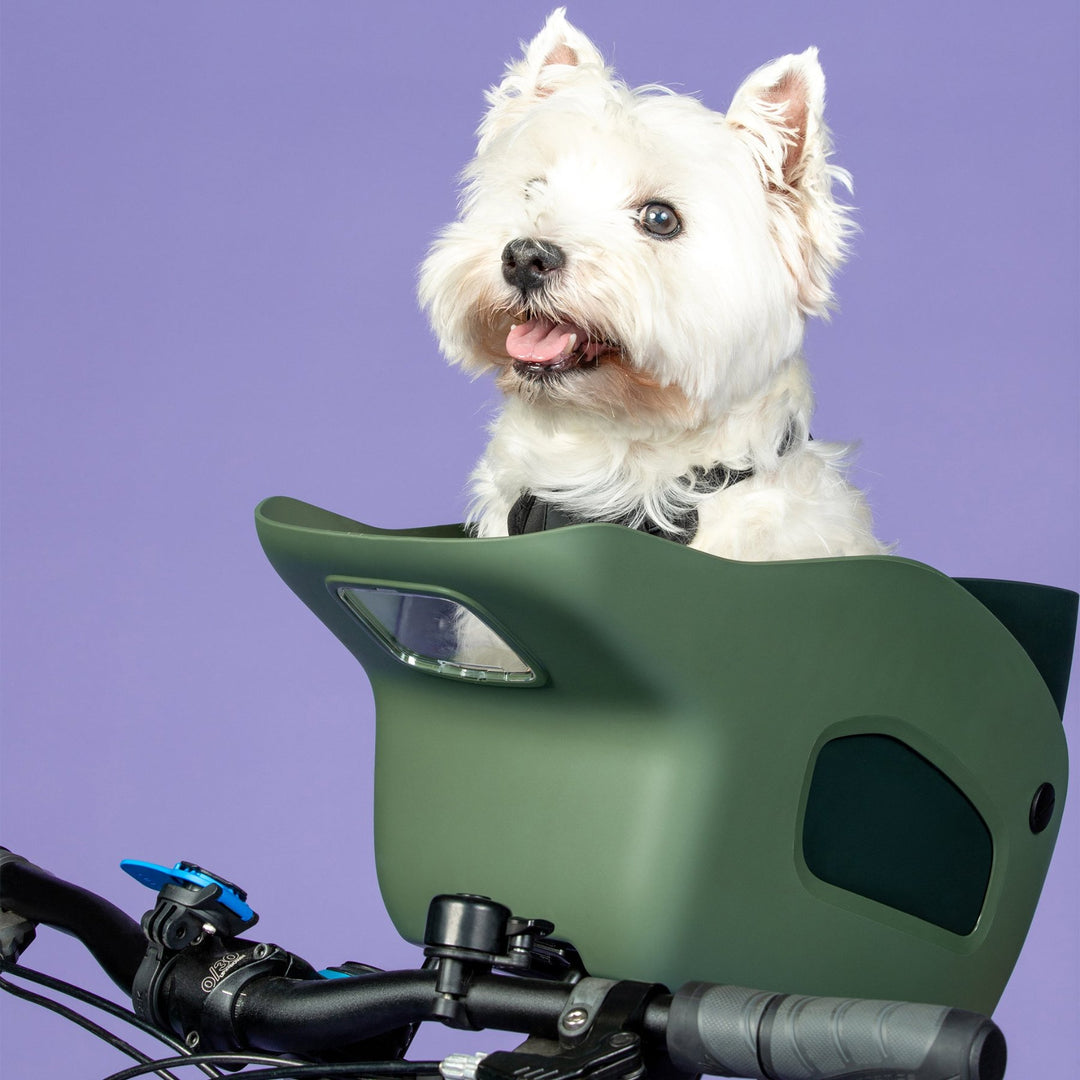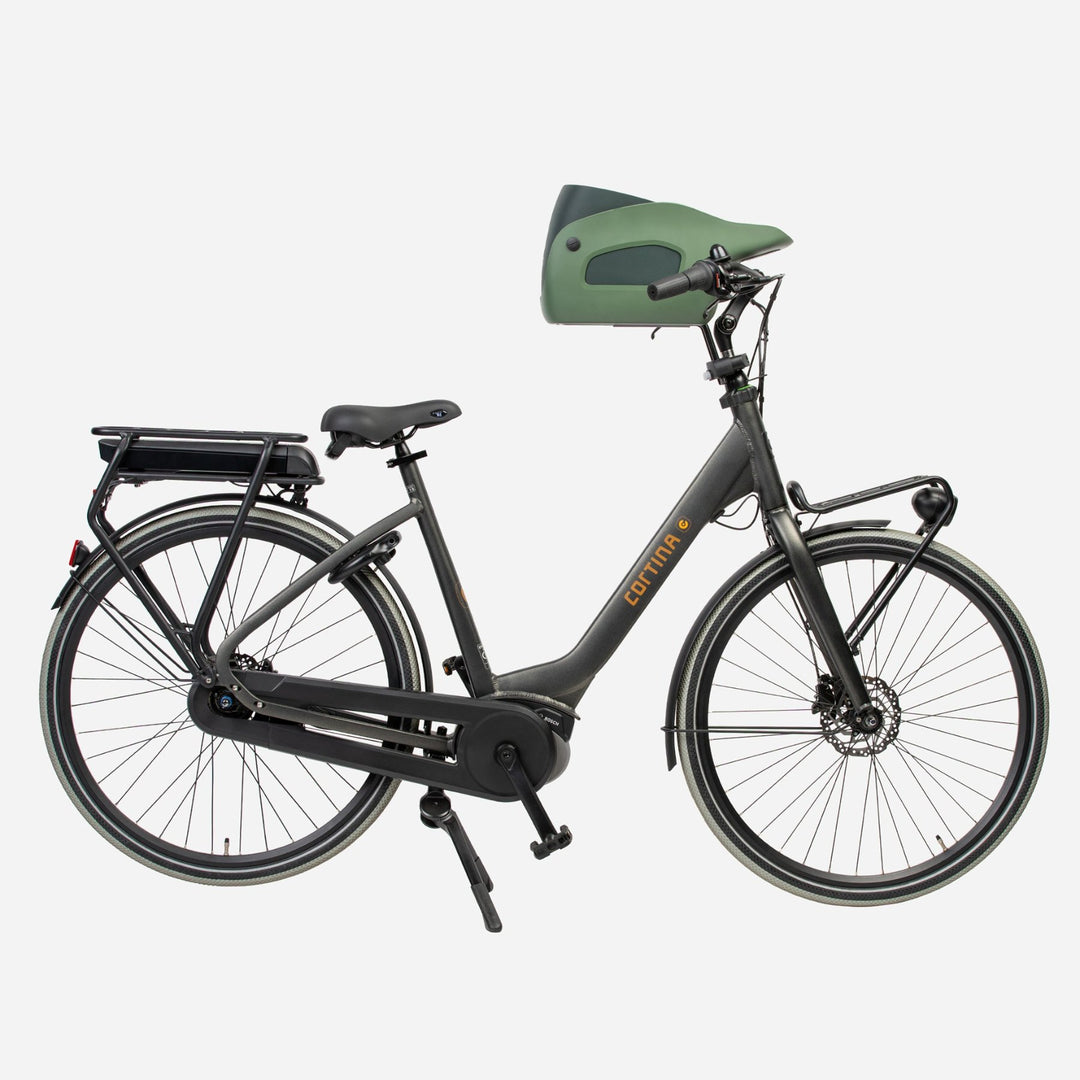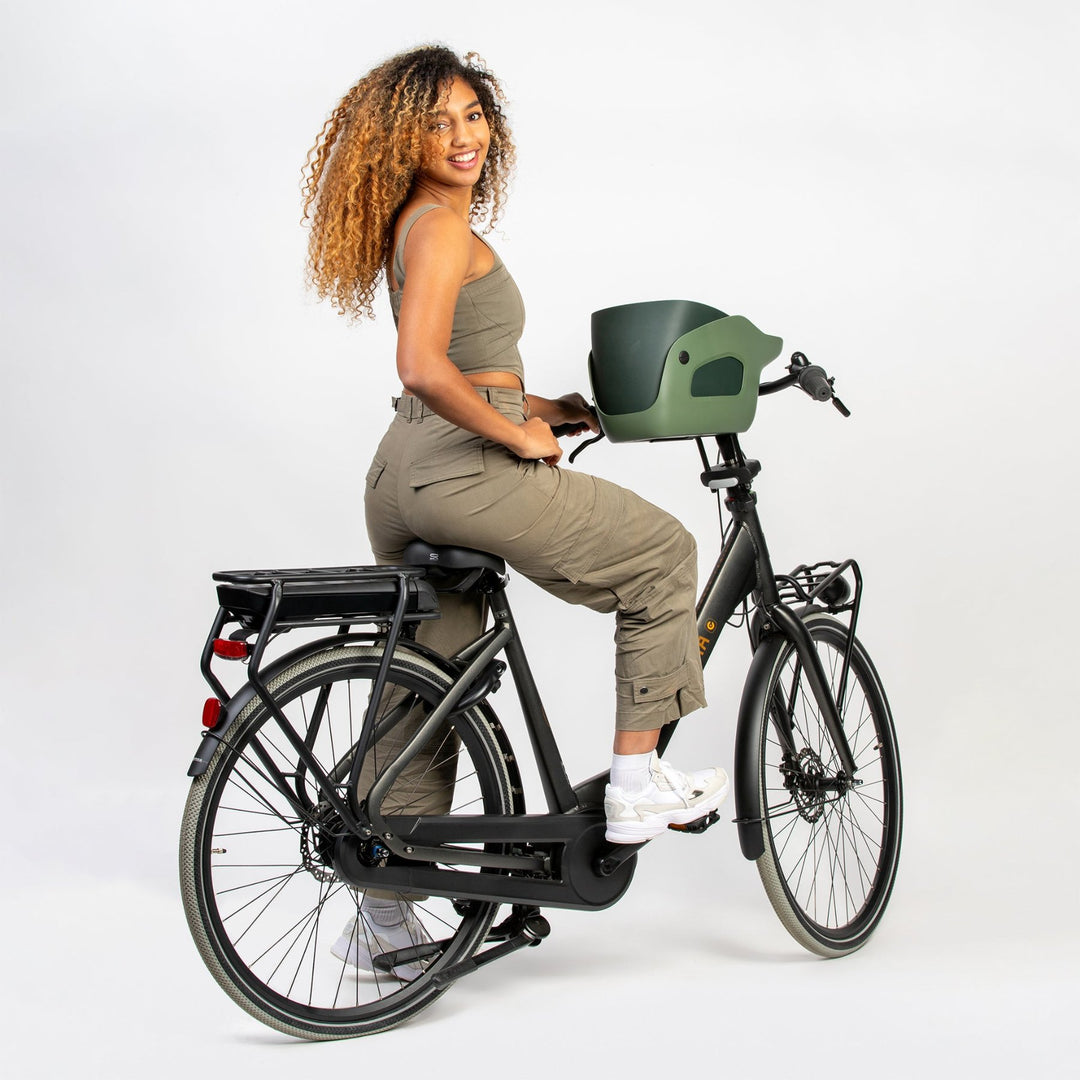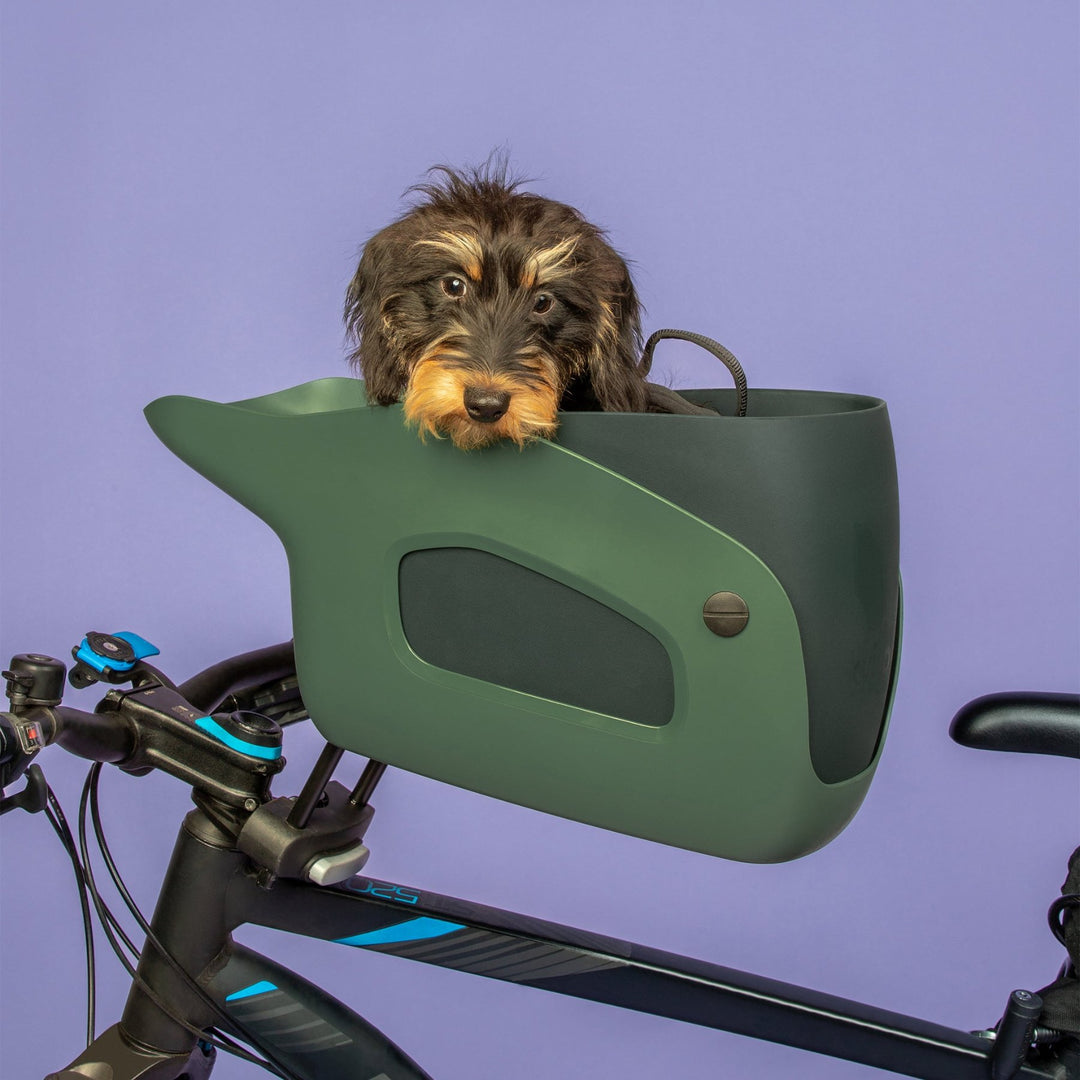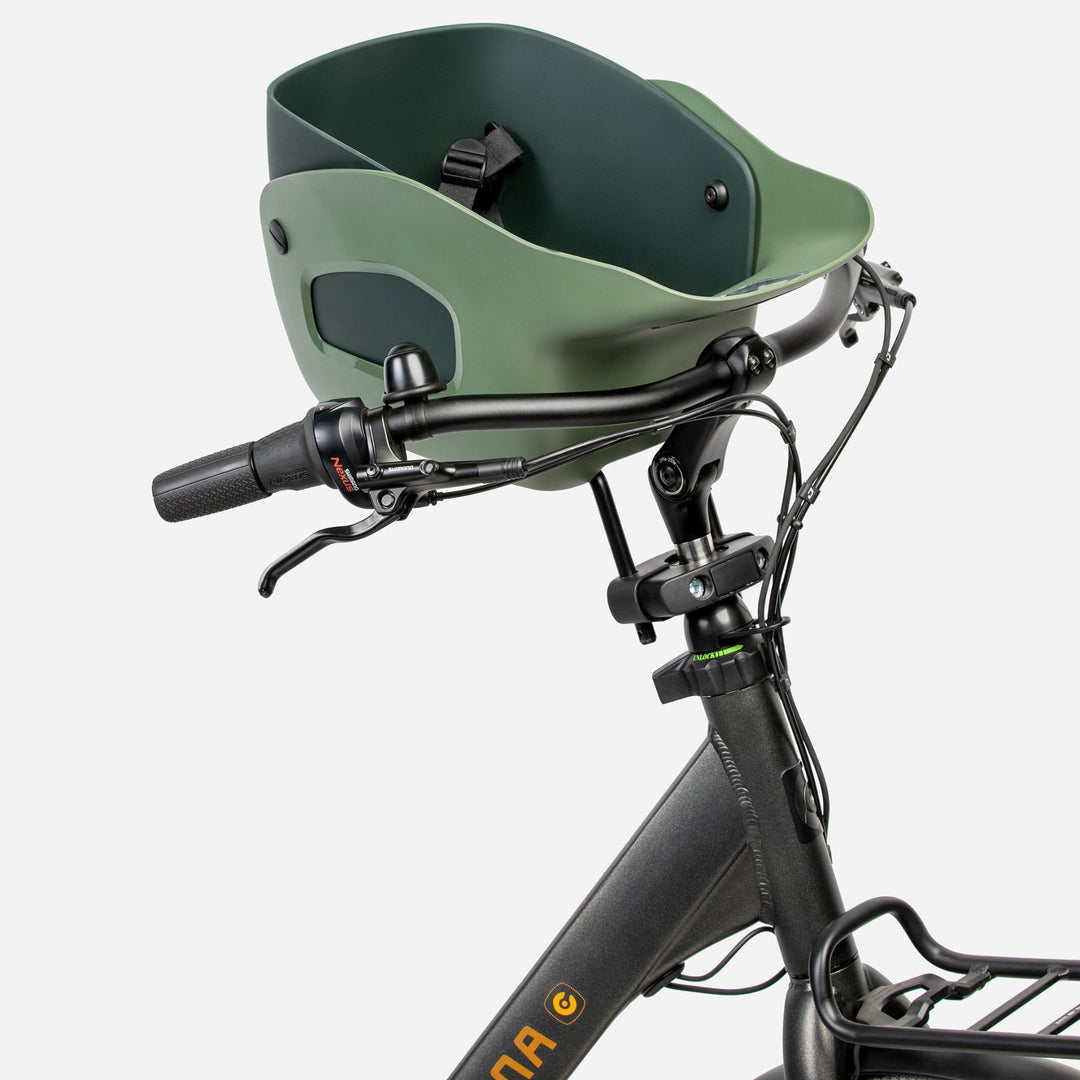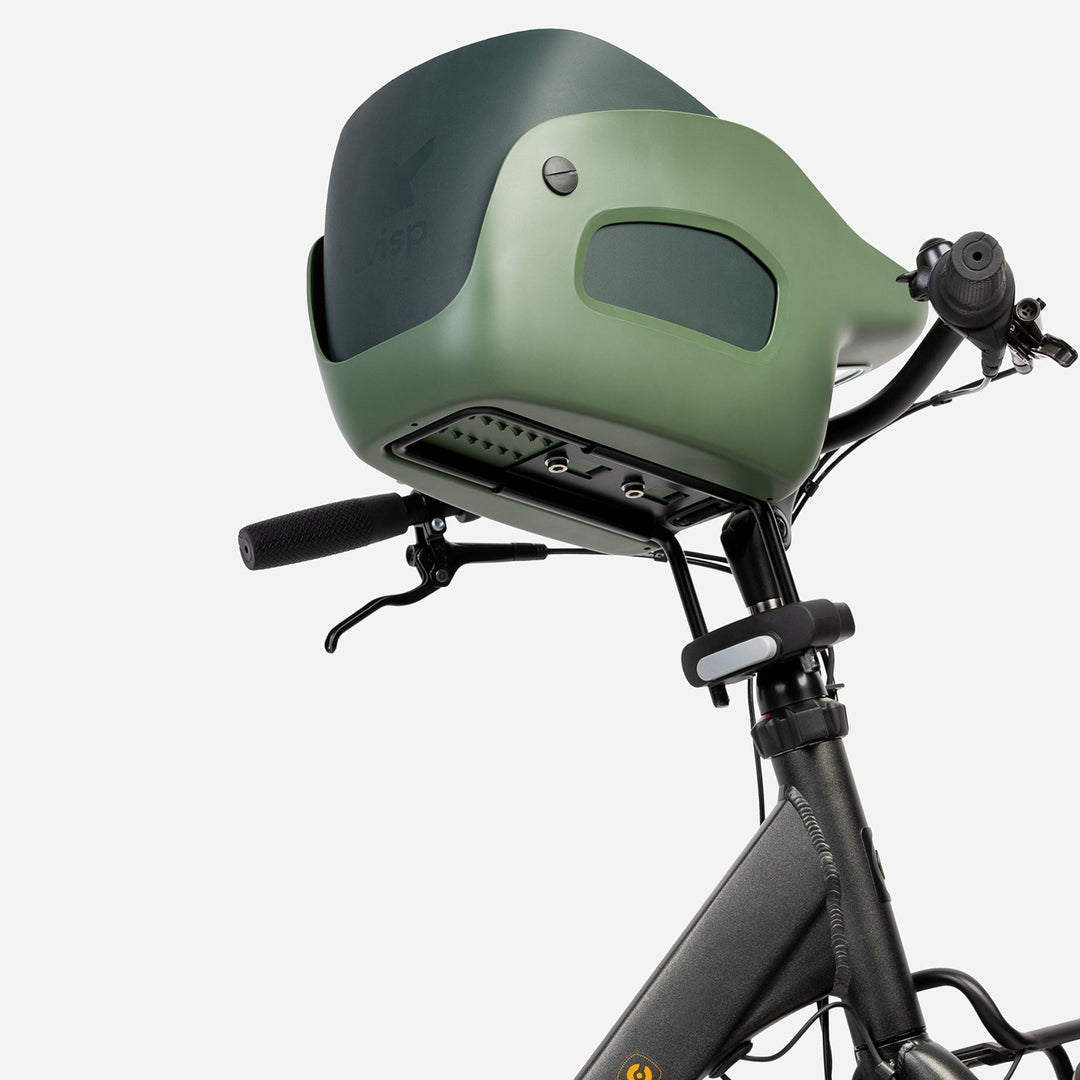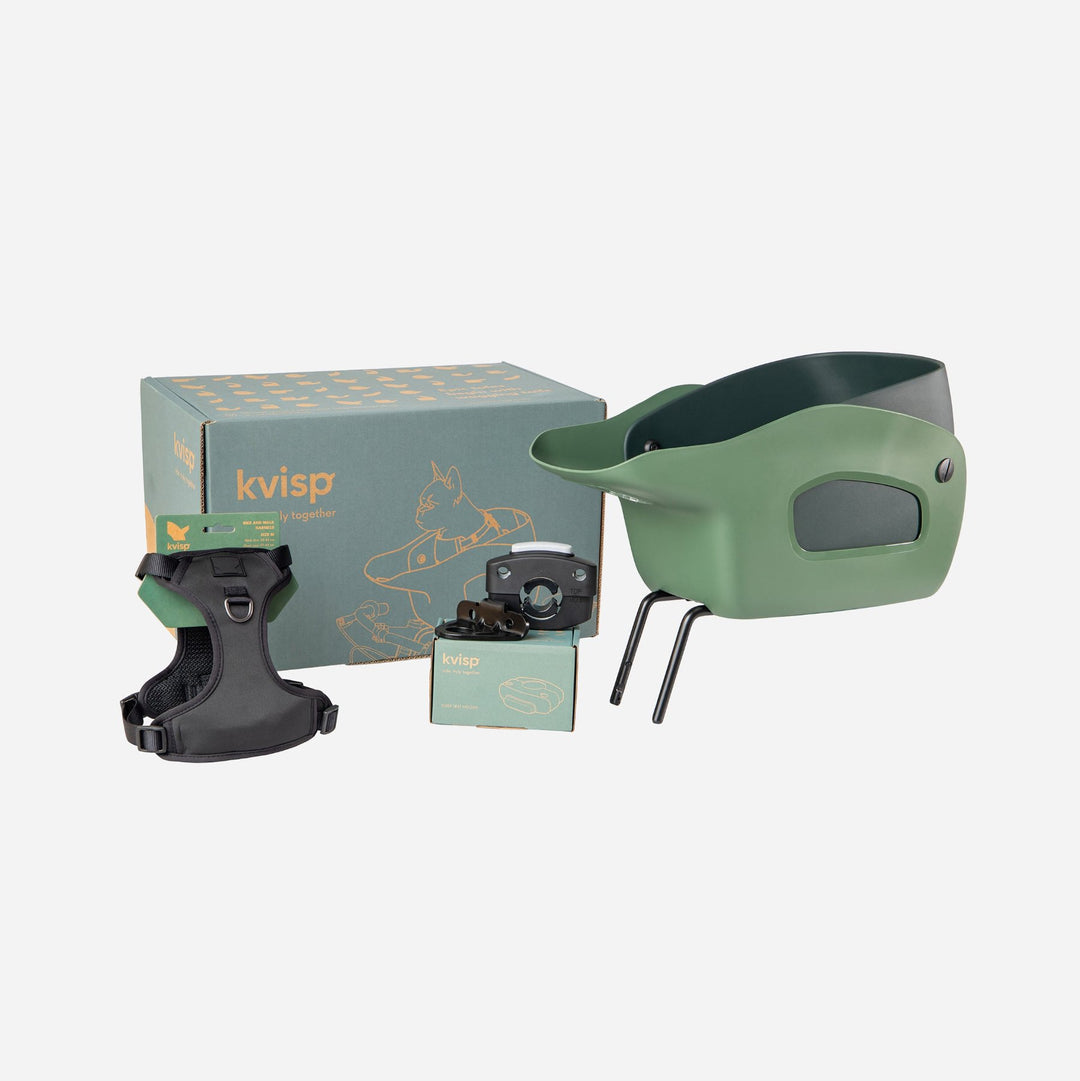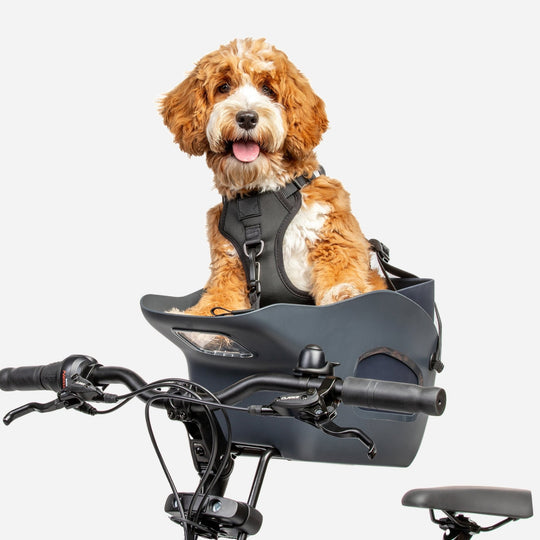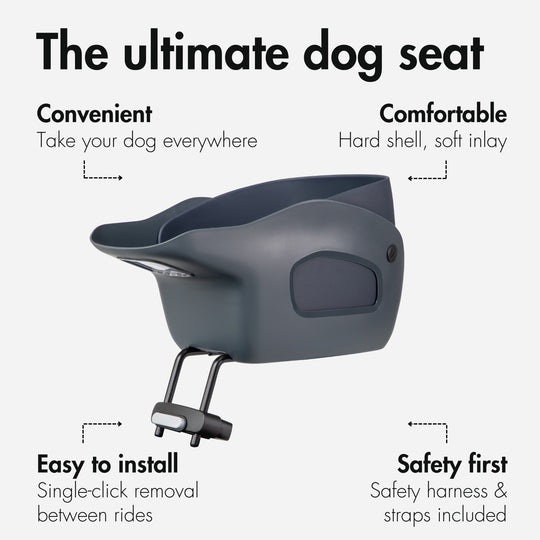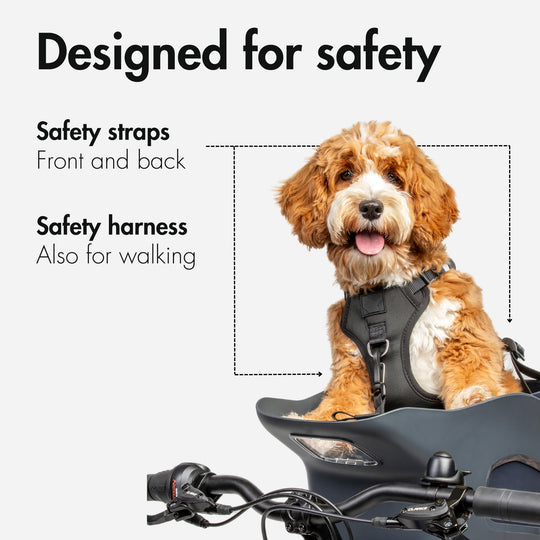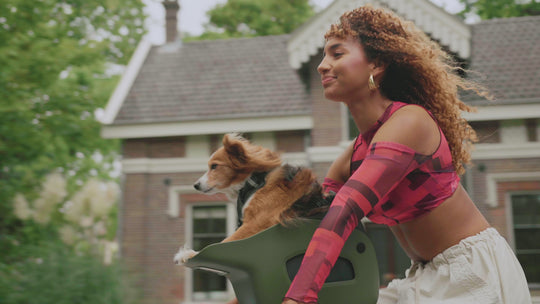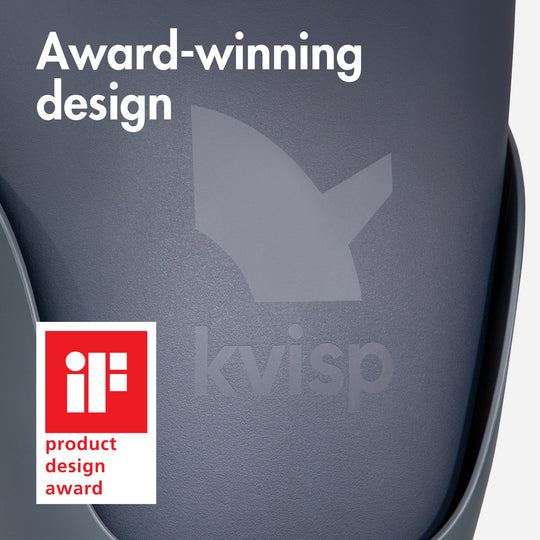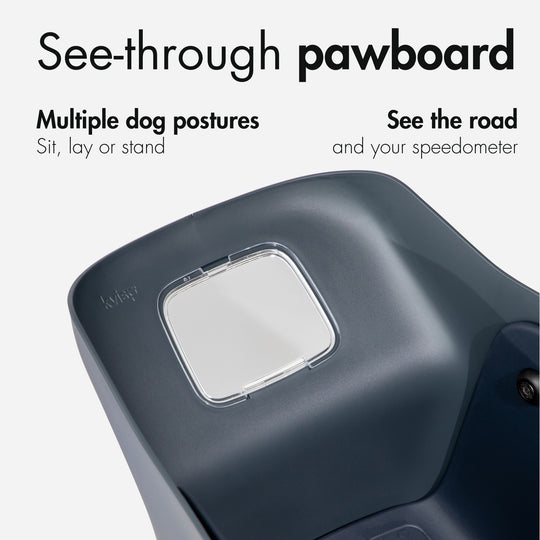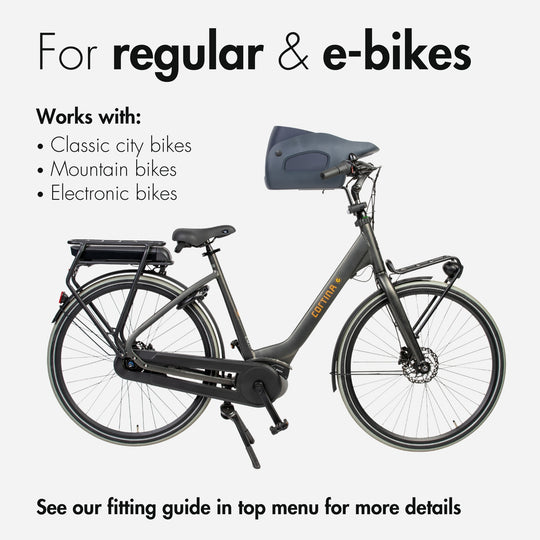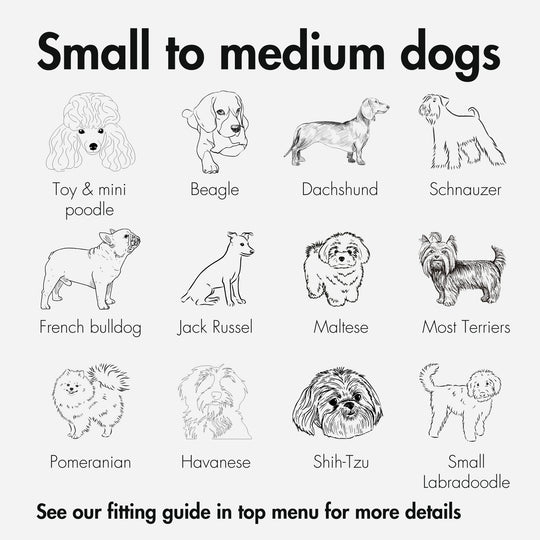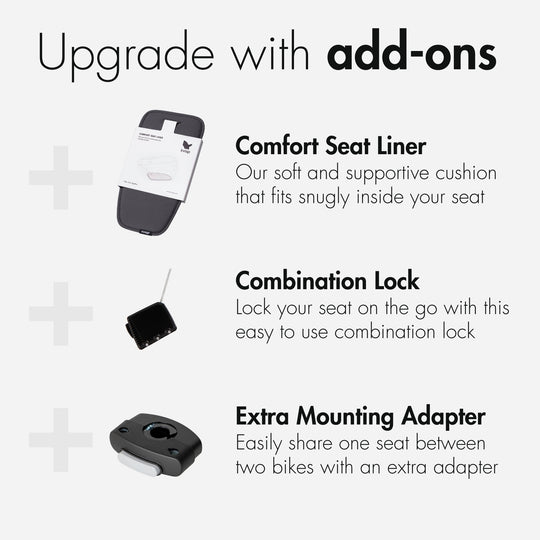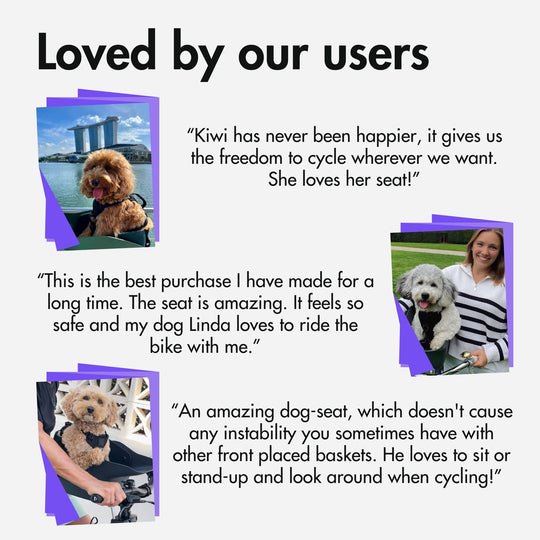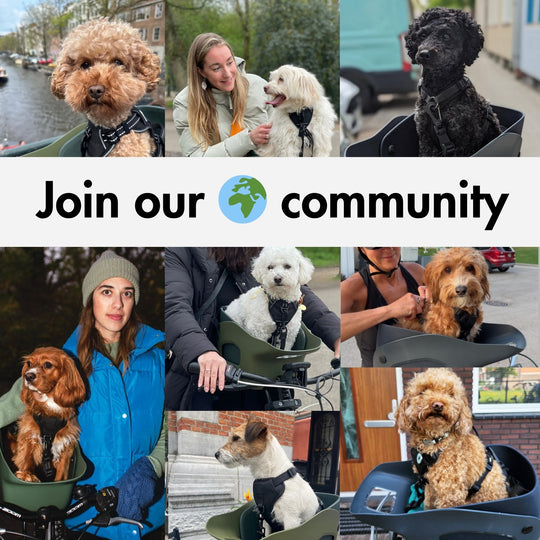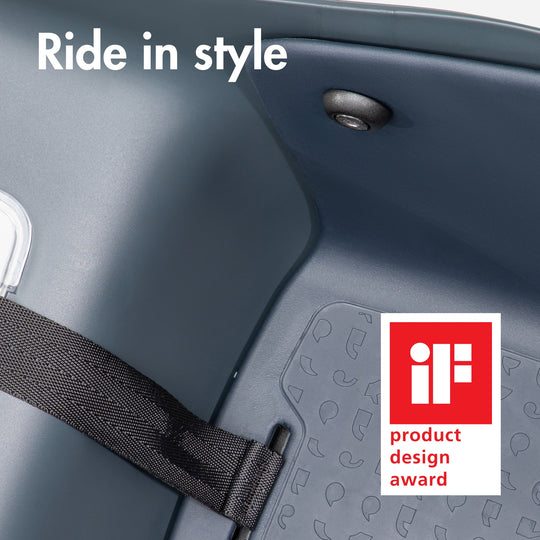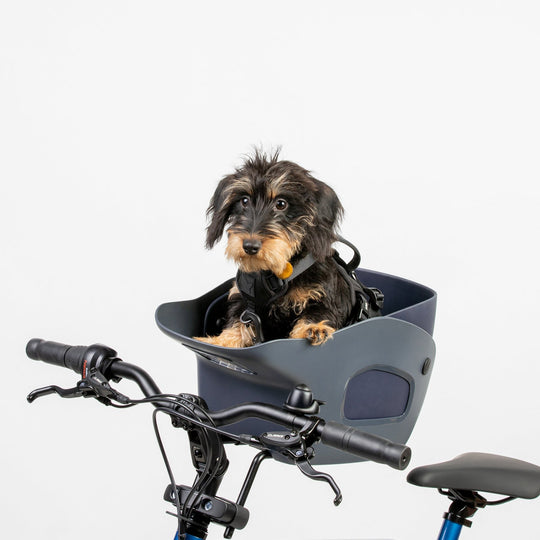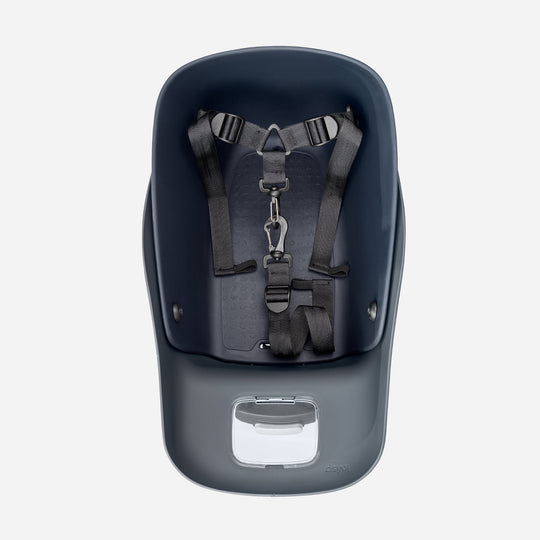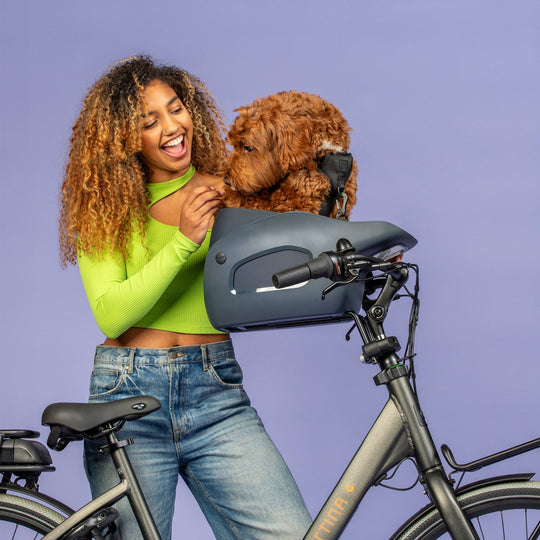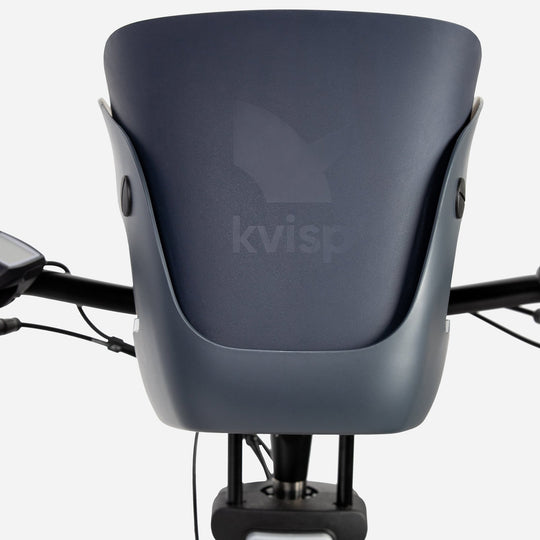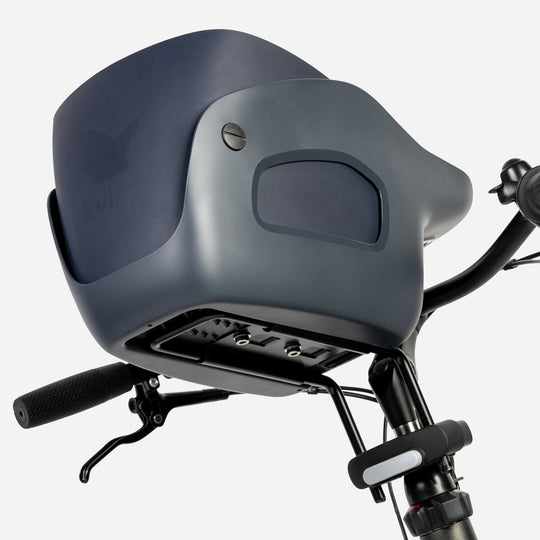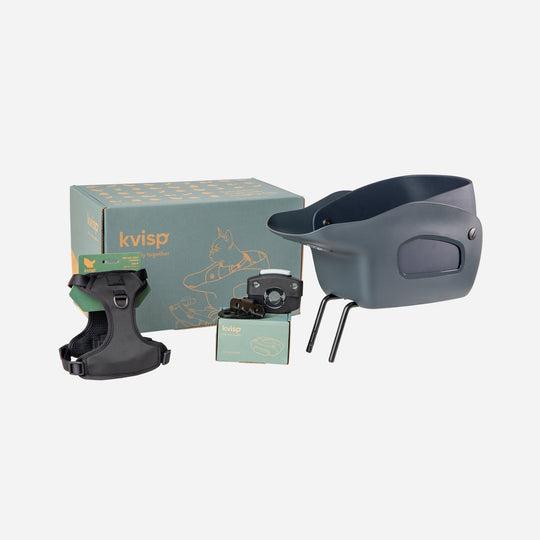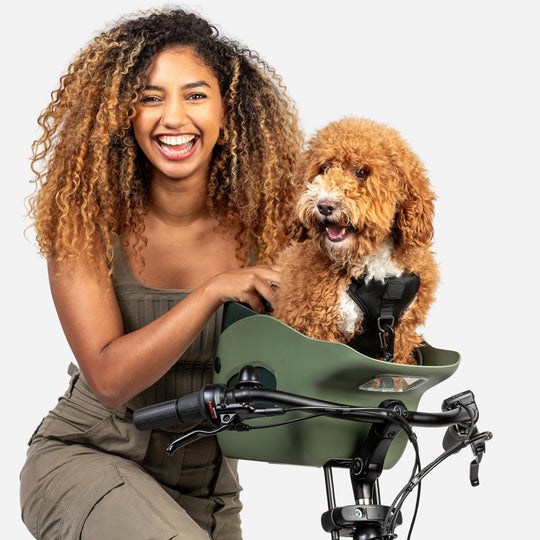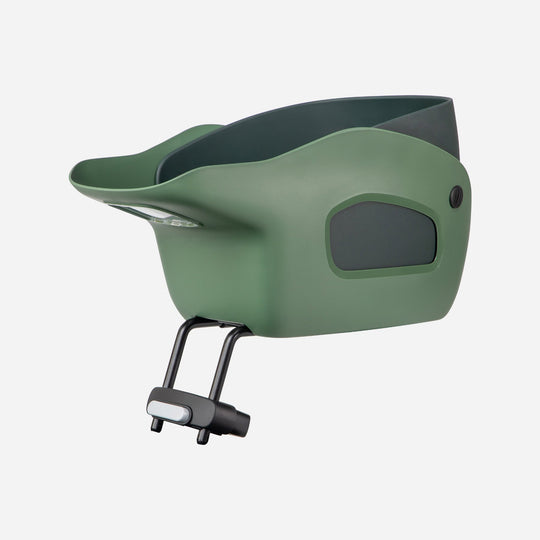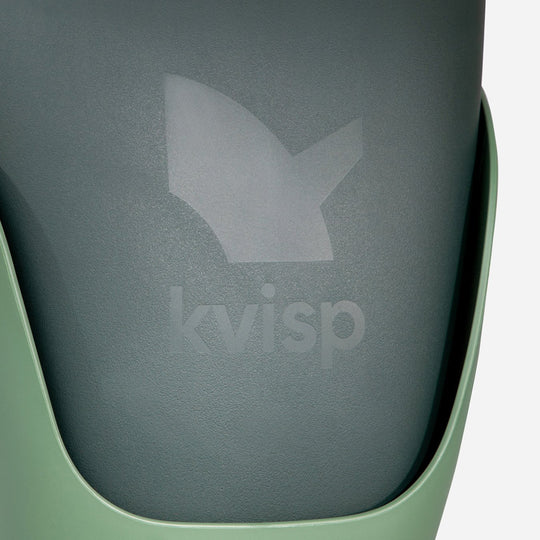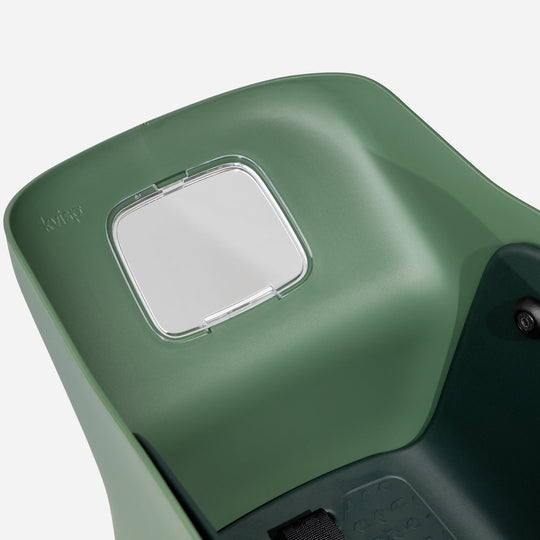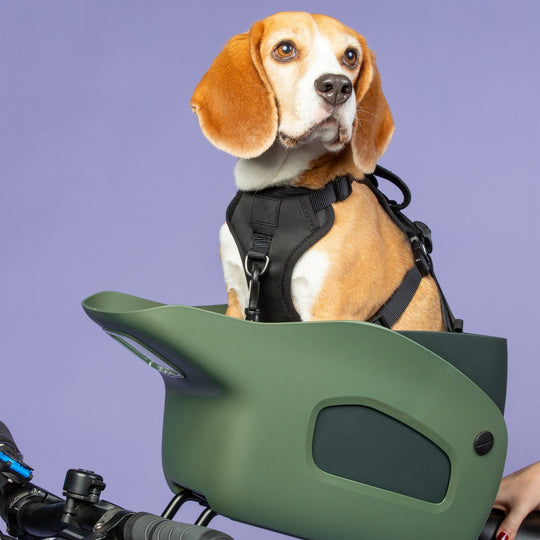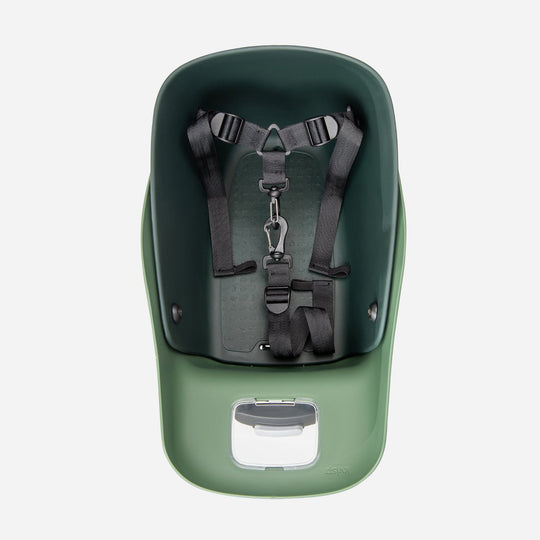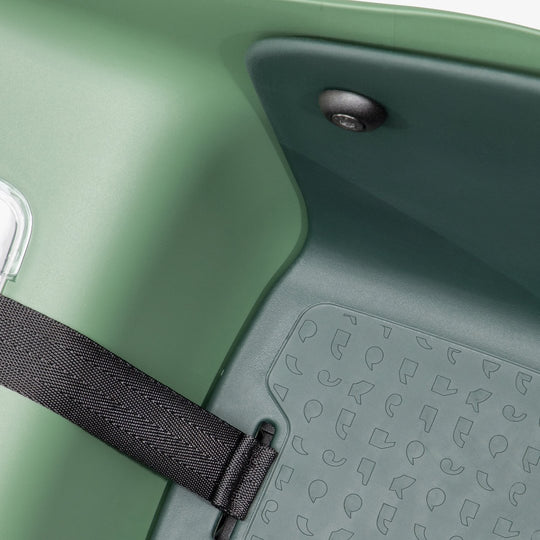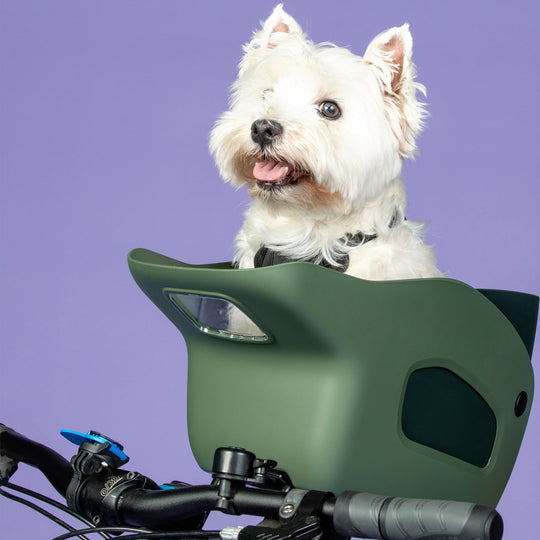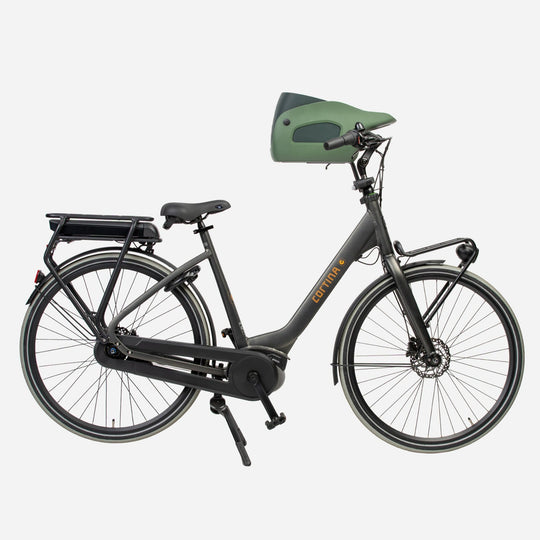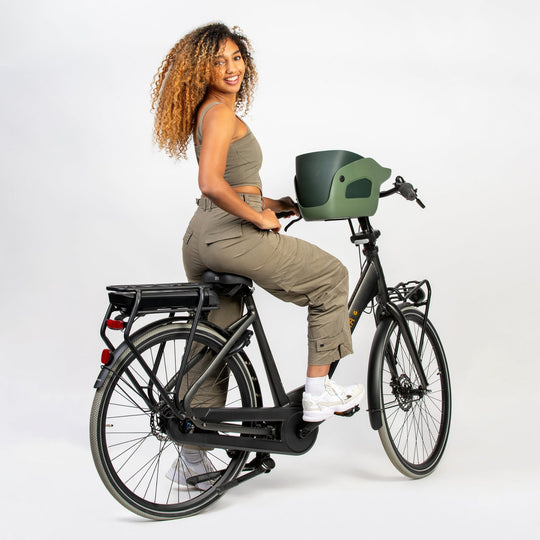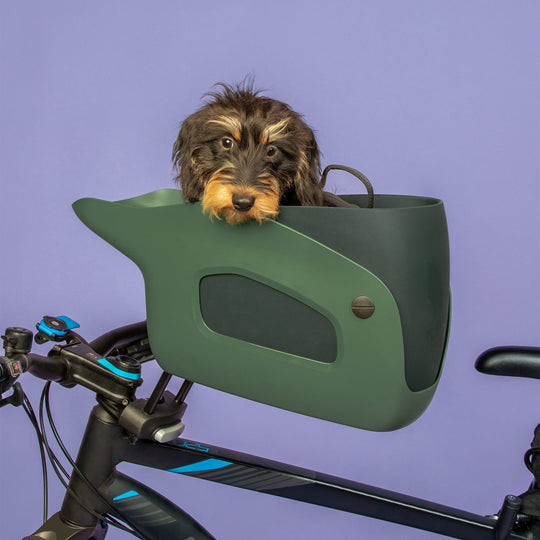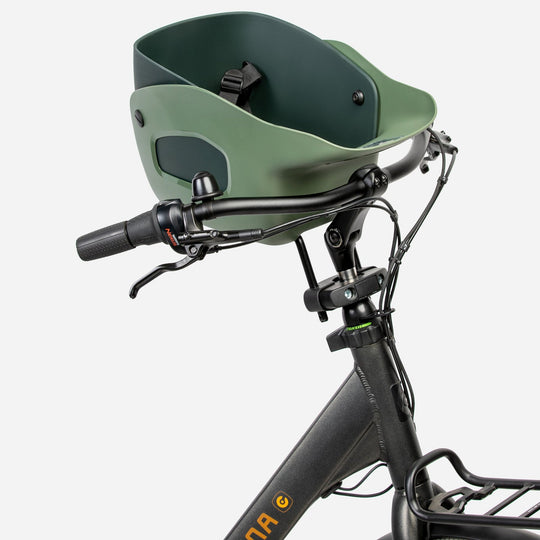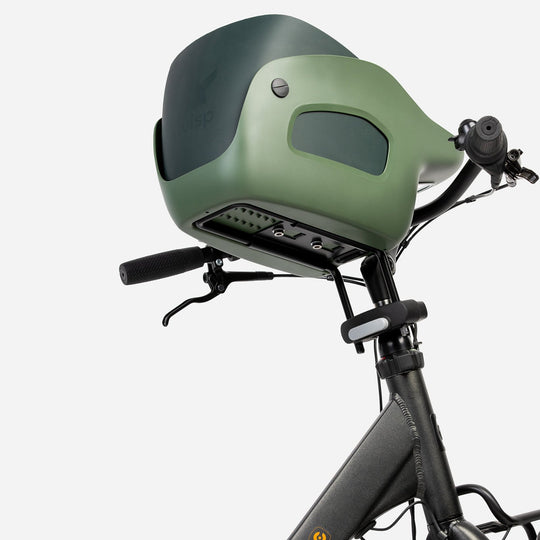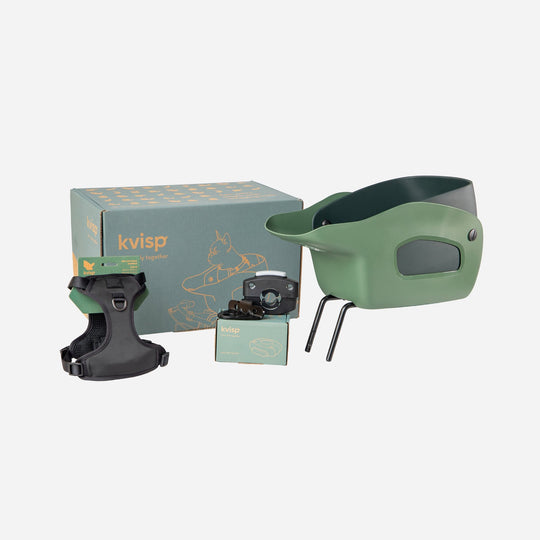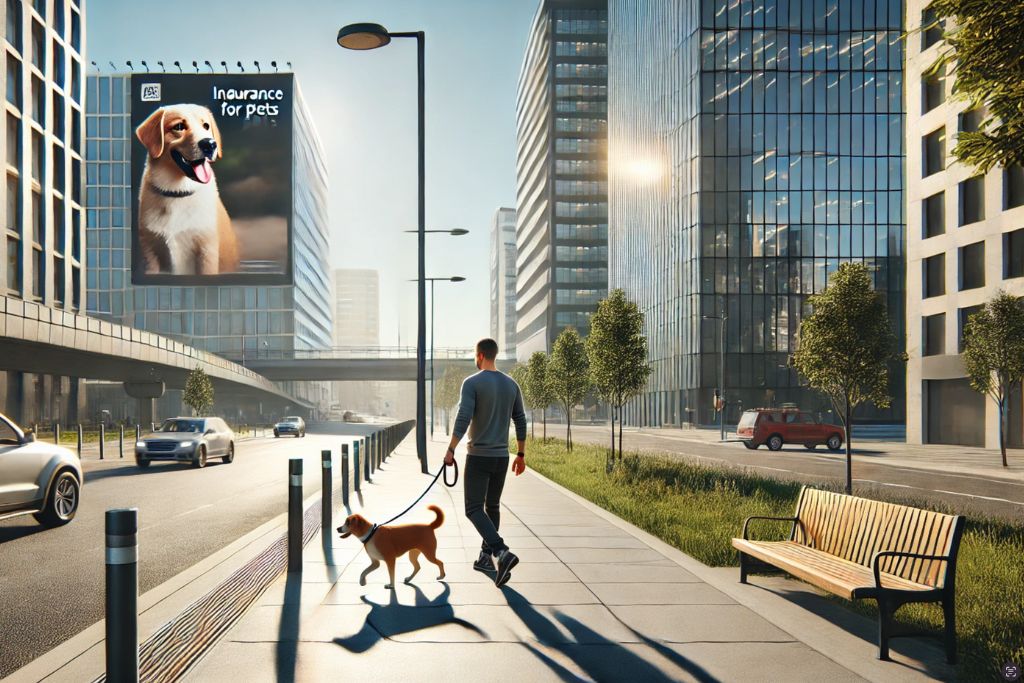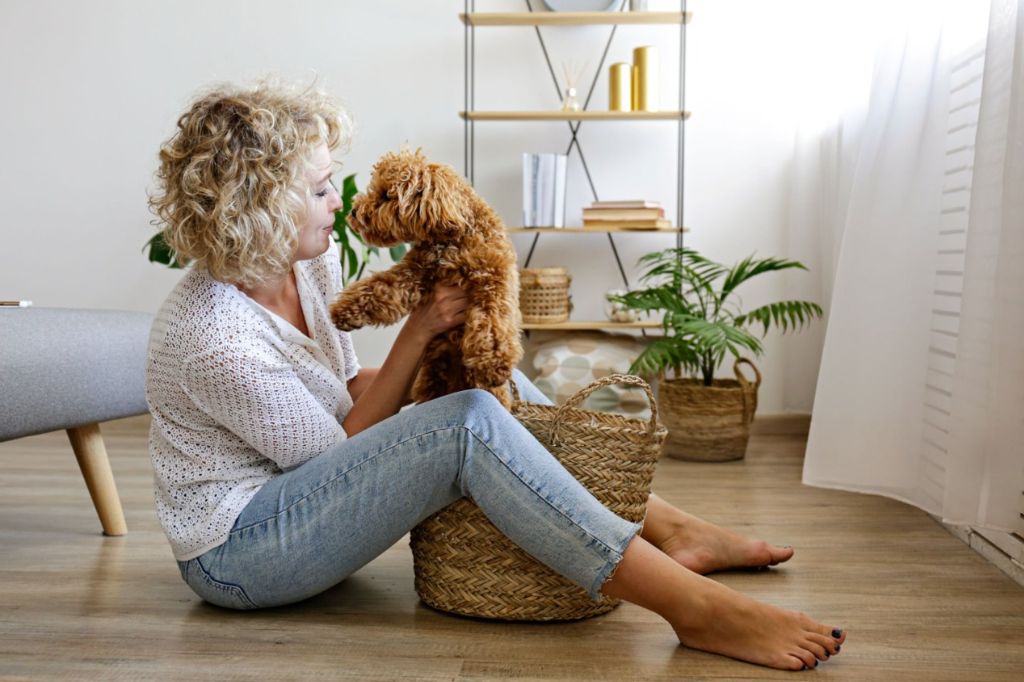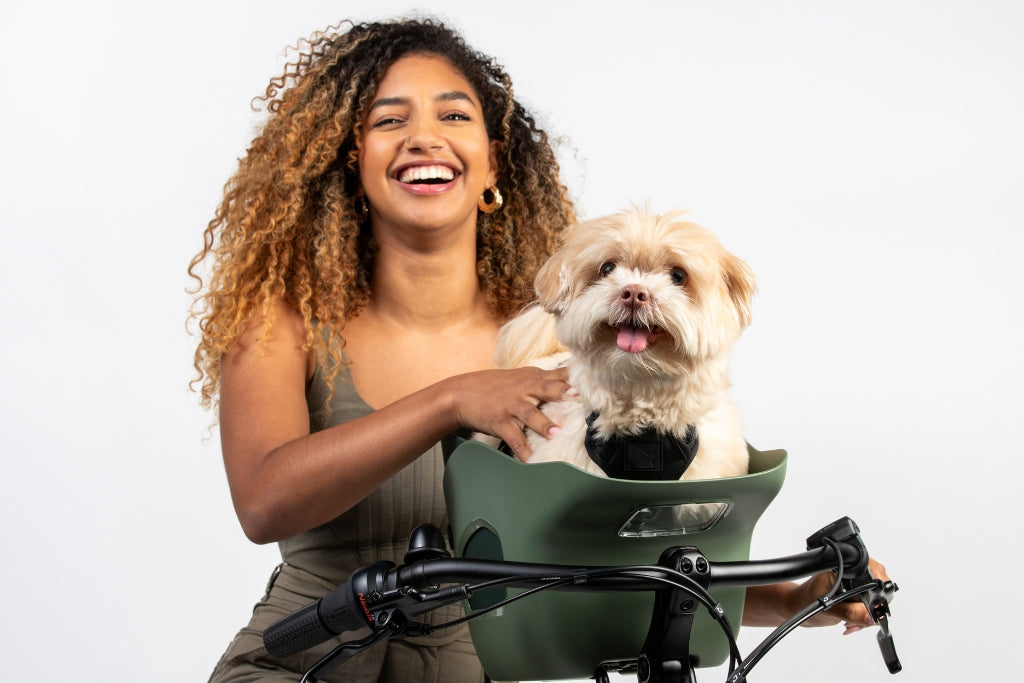How to Introduce Your Puppy to a Bike Carrier Step-by-Step
Taking your puppy on bike rides is an exciting way to bond while enjoying the great outdoors. But let’s be real—puppies can be unpredictable! A new experience, like riding in a puppy bike carrier, can be overwhelming at first. That’s why a step-by-step introduction is key. Rushing the process can lead to stress or fear, making future rides a struggle. Instead, a structured and patient approach helps build their confidence, creating positive associations with the carrier from day one.
In this guide, you’ll learn everything from choosing the right bike carrier for your puppy to gradually introducing your pup to the experience. We’ll cover training tips, pet acclimation techniques, and essential safety measures. Whether you're planning short rides around the neighborhood or gearing up for longer adventures, this guide ensures a smooth and enjoyable transition for both you and your furry co-pilot.

Understanding Your Puppy’s Comfort Level
Every puppy reacts differently to new experiences. Some are adventurous and eager to jump into a bike basket, while others may hesitate and need extra reassurance. Understanding your pup’s personality is essential for enjoyable bike rides. A cautious puppy may require more time to adjust, while a fearless one might need structured training to manage overexcitement. Patience is crucial; forcing an anxious puppy into a carrier can create lasting fear, so it's important to proceed at their pace.
Look for signs that your puppy is ready (or not ready) for a bike carrier. Positive indicators include curiosity about the carrier, calm behavior when inside, and a willingness to stay put for short periods. On the other hand, if they’re trembling, whining, or trying to escape, they’re not comfortable yet. That’s okay! With gradual exposure and plenty of positive reinforcement, even the most hesitant pup can become a confident riding companion.
Choosing the Right Bike Carrier for Your Puppy
Choosing the right bike carrier for your puppy can greatly impact your biking experience. The key factor is size; your pup should have enough room to sit and turn comfortably without excessive space that might make them feel insecure. Stability is equally important—opt for a well-balanced small dog bicycle carrier that won’t shift unexpectedly during rides. Additionally, good ventilation is essential, especially in warm weather, to keep your puppy cool and comfortable.
There are a few different types of carriers to consider:
- Front-mounted carriers allow you to keep an eye on your pup and interact with them while riding.
- Rear-mounted carriers offer a more balanced weight distribution but may make nervous pups uneasy without direct visibility.
- Enclosed carriers provide extra security, ideal for first-timers or particularly small dogs.
- Open-top baskets give adventurous pups a breezy, scenic experience but require a well-fitted harness for safety.
Whichever type you choose, prioritize safety features like secure fastenings, interior tethers, and padded interiors for a comfy and safe ride.
Getting Your Puppy Familiar with the Carrier Indoors
Before you even think about attaching the carrier to your bike, start by introducing it inside your home. This creates a stress-free environment where your puppy can explore at their own pace. Place the carrier in a familiar area and allow them to sniff, investigate, and interact with it. Toss in their favorite blanket or a well-loved toy to make it feel more inviting. If your pup seems hesitant, use treats and praise to encourage them to approach and step inside on their own.
Building positive associations is crucial. Instead of forcing them in, make it a game—reward them when they willingly step inside and sit for a few seconds. Gradually increase the time they spend inside the carrier while keeping the experience enjoyable. Some puppies will jump in and settle quickly, while others need repeated, gentle encouragement. The goal? Have them see the carrier as a safe and cozy space before introducing movement.
Introducing Movement in a Controlled Environment
Once your puppy is comfortable sitting in the carrier, it’s time to add a little motion. Start by gently lifting the carrier while they’re inside, moving it slightly from side to side. This simulates the kind of motion they’ll feel when attached to a bike. Keep the session short and sweet, rewarding your puppy with treats and praise for staying calm. If they react with nervousness, slow things down and let them adjust at their own pace.
Next, go for a short walk while carrying the carrier in your hands. This helps them get used to mild movement and shifting sensations in a controlled setting. Watch their body language—if they remain relaxed, you’re on the right track! If they squirm or seem unsure, give them time to adjust before moving forward. A successful introduction to movement makes the transition to bike rides much smoother.
Attaching the Carrier to Your Bike: First Static Experience
Now that your puppy is comfortable with gentle movement, it’s time to introduce them to the bike setup. Place the carrier securely on your bike while it remains stationary. Let your puppy hop in (or gently place them inside) and allow them to adjust to this new position. Keep the session short, letting them sit for a minute or two before letting them out.
While in the carrier, reassure them with your voice and offer treats for calm behavior. This is a big step in pet acclimation, so avoid rushing it! Some pups may take to it instantly, while others need several sessions before feeling secure. Allowing them to exit freely builds trust and helps prevent negative associations with the carrier.
The First Ride: Starting Small
Your first ride should be short, slow, and smooth—think of it as a test run! Pick a quiet, familiar path free from distractions or heavy traffic. Start with a gentle pedal, keeping the ride under 5-10 minutes to gauge your pup’s comfort level. Stay attentive to their body language. A relaxed pup will sit comfortably, while an uneasy one may shift around or try to climb out.
If your puppy seems nervous, stop and give them a break. Never push them beyond their comfort level. With each successful ride, gradually increase the duration until they’re fully at ease. Remember, your puppy bike carrier is meant to be a fun and enjoyable space, not a stressful one.
Extending Ride Duration and Building Confidence
Once your puppy is comfortable with short bike rides, it's time to gradually extend the duration. Just like any new experience, slow and steady wins the race! Increase the length of each ride by just a few minutes at a time, ensuring your pup remains relaxed throughout. Keep the routes familiar at first, sticking to smooth, quiet paths where there are minimal distractions. Consistency is key—your puppy should feel that every bike ride is a safe and predictable adventure.

As your pup’s confidence grows, you can start introducing mild variations in terrain, like gentle slopes or slightly busier streets. This helps them adjust to different riding conditions in a controlled way. Watch how they react—if they remain calm, you're on track! If they seem uneasy, go back to an easier ride before trying again. Reinforcing trust through predictable routines and positive experiences will help your puppy associate bike rides with fun rather than stress.
Troubleshooting Common Issues
Even with the best preparation, you might run into a few bumps along the way—literally and figuratively! One of the most common issues is puppy anxiety. If your pup seems restless or nervous in their puppy bike carrier, try shortening the ride time and offering extra reassurance. Use training tips like gentle petting, soft-spoken words, and treats to reinforce calm behavior.
Another challenge? Motion sickness. Some puppies experience mild nausea during movement, especially in the beginning. If your pup drools excessively, appears lethargic, or seems uncomfortable after rides, consider taking breaks mid-ride or consulting your vet for safe anti-nausea solutions. Lastly, always double-check that the carrier is properly secured. A wobbly or unstable bicycle carrier can make your pup feel unsafe, so ensuring a stable, well-balanced attachment is crucial for their comfort.
Ensuring Safety for You and Your Puppy
Prioritize your puppy's safety! A securely attached dog basket for your bike prevents shifting or tipping during rides. Always ensure all fastenings are tight—loose straps or a misaligned carrier can create hazards. Most quality carriers include interior safety tethers to keep your pup stable while allowing some movement.
In addition to securing the carrier, consider using a well-fitted harness instead of a collar. This prevents any accidental choking if they shift inside the basket. Be mindful of road conditions, too—uneven terrain, sudden stops, or unexpected bumps can startle your pup. If it’s your first time riding together, pick a smooth, quiet trail to reduce stress and ensure a safe, comfortable experience for both of you.
Training Commands for a Smooth Ride
A few basic training commands can make bike rides much easier (and safer). Teaching your puppy to "stay" when inside the carrier prevents them from trying to jump out unexpectedly. "Settle" is another useful cue, reinforcing calmness while in motion. Short, rewarding training sessions before and after rides will help your pup understand what's expected of them.
Hand signals can also be helpful, especially since riding means you won’t always have both hands free for treats. Pairing a hand cue with verbal commands makes training more effective. Be patient—puppies learn at their own pace! If you keep training consistent and rewarding, your pup will soon understand that staying still inside the carrier equals more fun bike rides with you.
Preparing for Different Weather Conditions
Weather can make or break your puppy’s biking experience. On hot days, make sure they stay hydrated and have enough airflow in their puppy bike carrier. Opt for a breathable carrier with mesh panels, and try riding during the cooler parts of the day (early morning or late afternoon). A collapsible water bowl is a great travel companion, so you can take hydration breaks mid-ride.
For colder rides, layer your pup appropriately. A small, lightweight sweater can help keep them warm, especially if they have short fur. If it's raining, consider a weatherproof cover for the carrier to keep them dry. Wind can also be a factor—too much exposure can make small dogs uncomfortable, so if it’s especially breezy, consider postponing the ride or keeping it short. Your pup's comfort is always the priority!
Transitioning to Longer or Group Rides
Once your puppy has mastered short rides, you might be tempted to take them on longer adventures. Before you do, make sure they're truly ready. Can they stay comfortable in the carrier for extended periods? Do they remain calm in busier environments? If so, you can start planning longer routes.
If you want to bring your pup on group rides, introduce them gradually to biking companions. Some dogs are social butterflies, while others need more time to get used to new faces (and wheels!). Practice first in a quiet setting, then slowly expose them to more riders over time. Ensuring your puppy is comfortable with both the motion of biking and the presence of other cyclists will make for a more enjoyable experience.
Maintaining Your Bike Carrier for Longevity
To keep your puppy bicycle carrier in top condition, regular maintenance is essential. Over time, straps can loosen, padding can wear down, and attachments can weaken. Check all fastenings before each ride to ensure everything remains secure. If your carrier has a built-in tether, verify that it’s still in good condition and not fraying.
Cleaning is another important factor. Dogs shed, drool, and track in dirt! A simple wipe-down after each ride helps keep the carrier fresh, while a deeper clean every few weeks prevents odors from building up. If your carrier has a removable liner, toss it in the wash periodically. When not in use, store the carrier in a dry, safe space to prevent wear and tear. A well-maintained carrier ensures both safety and comfort for your pup in the long run!
Making Bike Rides a Fun and Routine Experience
At the end of the day, bike rides should be an enjoyable bonding experience between you and your furry friend. The more positive experiences your puppy has, the more they'll look forward to hopping in their carrier! Reinforce good behavior with praise, treats, and gentle encouragement, ensuring that every ride remains a stress-free adventure.
As your puppy grows, their biking preferences may evolve. Some pups will become seasoned co-pilots, eager for longer journeys, while others may prefer shorter, relaxed trips. Pay attention to what your pup enjoys most, and make adjustments to fit their comfort level. No matter what, sharing outdoor adventures together is what truly matters. So gear up, grab your pup, and hit the road for some unforgettable biking memories!




